#and without the clever references to the source material all over
Explore tagged Tumblr posts
Text
If I could rediscover whatever kind of creative juice i was drinking when I wrote Earth's Champion and put just half of that energy into a published fiction I'd be happy forever
#you ever read a book so good you wish you had written it?#now try having written a fic so good you wish you could write it again#the only drawback is that it's a FIC#and its audience is therefore intrinsically limited#if i could somehow put this same energy into an original fiction#but how can this plot work without the source material#what would it be without the context#and without the clever references to the source material all over
70 notes
·
View notes
Text
To Boldly Sew: The Creation of Star Trek's Iconic Wardrobe
Gene Roddenberry’s arguments with NASA, costumes crafted from shower curtains, male characters in miniskirts, and why the gold command uniforms were actually green—this is the story of Star Trek’s groundbreaking wardrobe and the visionary work of the man behind it, Bill Theiss.
If you’d like to read the formatted article with easily accessible references, you can also find it on AO3.
During the production of the original Star Trek, the creative team faced numerous challenges, the most persistent being, unsurprisingly, the show’s limited budget. These restrictions had a significant impact on many aspects of the series, including one of its most crucial visual elements: the wardrobe.
Each week, the costume department was tasked with creating original outfits for the show’s characters. Alien civilizations had to look distinct and believable without distracting from the storyline—all while staying within a tight budget. To achieve this, the team employed clever tricks, such as repurposing and dyeing old uniforms, turning garments inside out, and even fashioning costumes from unconventional materials like vinyl shower curtains.
"Sometimes a show will call for 30 or 40 costumes," explained Star Trek’s costume designer William "Bill" Theiss. "And since we film back to back, that means I have to design, get approval from the producers and director, and construct the costumes in six to eight days." [Source]

Commander Spock and Lieutenant Tormohlen don "protective suits" fashioned from shower curtains as they investigate the mysterious death of a mannequin crew member. (Season 1, Episode 4, "The Naked Time.")
Theiss was a key figure in shaping the visual identity of Star Trek’s universe. Over the course of the show’s three seasons, he designed costumes for a wide range of characters, from blue-skinned Andorians to the infamous Orion slave girls, and even the Nazi-inspired inhabitants of the planet Ekos. (Interestingly, the episode Patterns of Force, featuring Ekos, was banned from German television until 1995 due to its controversial themes.) [Source]
Theiss first met Star Trek creator Gene Roddenberry while Roddenberry was developing the show’s pilot. At the time, Theiss had gained attention for his innovative work on the science fiction play The Veldt, based on Ray Bradbury’s short story of the same name. This caught the eye of Star Trek writer Dorothy Catherine Fontana, who introduced Theiss to Roddenberry. By then, Roddenberry had already interviewed over a dozen costume designers but had yet to find someone who could bring his vision to life. Theiss’s creative approach, which often involved crafting unique costumes from unconventional materials, immediately resonated with Roddenberry. Their collaboration would continue for decades, even though, amusingly, Theiss never learned how to sew. [Source]
After the original Star Trek series was canceled, Theiss and Roddenberry remained close collaborators, working together on various projects until Roddenberry’s passing in 1991.


Left: William Theiss adjusts Susan Oliver's costume on the set of the 1965 pilot episode, "The Cage."
Right: William Theiss and Leonard Nimoy on the set of Season 2, Episode 26, "Assignment: Earth" (1968).
When designing Star Trek’s now-iconic multi-colored uniforms, Roddenberry drew inspiration from the color-coded uniforms used on American naval vessels, where quick role recognition was essential in low-visibility environments. As a former military pilot during World War II and later a police officer, Roddenberry had firsthand experience with structured, hierarchical organizations. These influences shaped not only Star Trek’s command structure but also its visual design. [Source]
Each division was assigned a distinct color: engineers, communications officers, and security personnel wore red; medical staff and scientists were dressed in blue; and command officers wore—believe it or not—green. (But more on that later.) All uniforms were paired with dark ash-colored trousers and high boots.
Star Trek is not typically associated with realism, which makes it surprising to learn that NASA was involved in the show’s production, offering advice to ensure it was "scientifically believable." Among their suggestions was the idea that 23rd-century astronauts might wear form-fitting jumpsuits. However, Gene Roddenberry dismissed the concept, humorously referring to the design as “long underwear.”
NBC, on the other hand, had entirely different priorities. The network insisted that female Starfleet officers wear more revealing attire, a demand that clashed with Roddenberry’s vision of a future where women were treated as equals to men. In the first pilot episode, The Cage (1965), Roddenberry boldly dressed female characters in pants—an unconventional choice for 1960s television. However, after much debate with the network, a compromise was reached: miniskirts. Highly fashionable at the time, they were paired with shorts and dark tights, blending contemporary trends with Star Trek’s futuristic aesthetic. [Source]

Captain Pike and a group of serious women in pants protect the heroine from an ass-headed very wise alien. The first pilot of Star Trek, "The Cage" (1965).
Years later, when NBC faced accusations of sexism and objectifying women, Nichelle Nichols, who played Uhura, defended the wardrobe choice in a BBC interview. She explained that the miniskirts weren’t unusual or inappropriate for the era:
“I was wearing them on the street. What's wrong with wearing them in the air? I wore 'em on airplanes. It was the era of the miniskirt. Everybody wore miniskirts.” [Source]
Grace Lee Whitney, who portrayed Janice Rand, echoed Nichols’s sentiment, adding that she “didn't think the women should be in pants” and that she wanted to “look like Flash Gordon” on screen. [Source]
Meanwhile, costume designer Bill Theiss had his own, more subtle approach to creating “revealing” costumes.
“He felt that revealing non-sexual flesh (the outside of the leg, off one shoulder, the back) promised that the viewer would see more — but they never did,” explained screenwriter D.C. Fontana, citing the gown worn by Lt. Palamas in Who Mourns for Adonais? as a prime example. [Source]
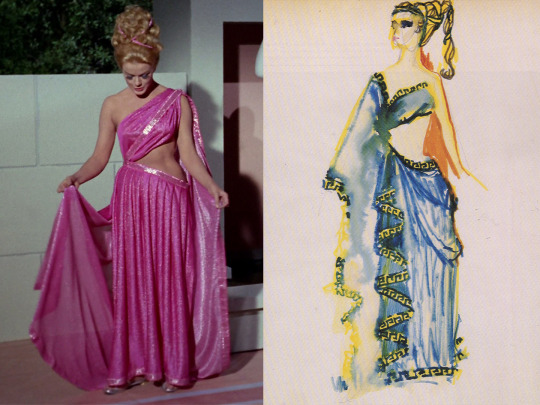
Lieutenant Palamas's "ancient Greek" dress from the episode "Who Mourns for Adonais?" alongside William Theiss's original sketch for the design.
When designing the original Star Trek uniforms, Theiss was tasked with creating something that reflected military influences while also looking futuristic and remaining inexpensive to produce. His approach was practical:
“As for where I get my ideas from… well, I don’t get them from my dreams or anything. Mainly, I get them from fabric that I see that’s available; I look for interesting patterns in the material itself,” Theiss once explained. [Source]
For the first two seasons, the Star Trek uniforms were made from velour, a newly invented fabric that was cheap, easy to maintain, and had an appealing sheen under studio lights. However, velour had its drawbacks: it tore easily (as evidenced by Captain Kirk’s frequent shirt-ripping battle scenes...) and shrank significantly after dry cleaning. Since the costumes had to be cleaned after every episode, viewers may notice that the uniforms became progressively tighter throughout the first two seasons. By the third season, velour was replaced with double-knit nylon, a more durable fabric used in professional baseball uniforms.
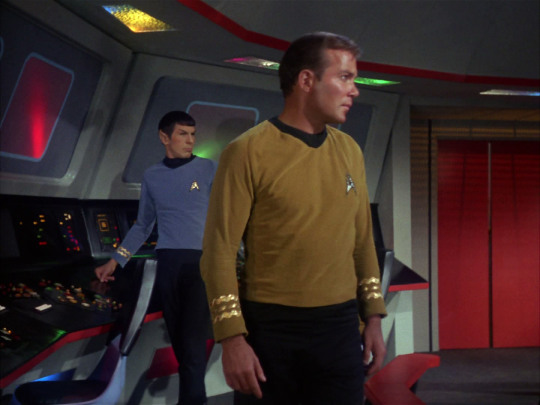

Left: Kirk's velour shirt from Season 1, Episode 10, "The Corbomite Maneuver." Right: The same shirt in Season 2, Episode 22, "By Any Other Name." Shatner is diligently sucking in his stomach.
This brings us to another interesting aspect of the original velour uniforms—their appearance on screen.
“It was one of those film stock things,” Theiss explained. “It photographed one way—burnt orange or gold. But in reality, it was another; the command shirts were definitely green.” [Source]
So, what color was Captain Kirk's uniform really? In truth, Kirk's uniform—like the rest of the command crew's—was olive green. However, under the bright studio lighting and the quirks of 1960s film stock, it appeared gold on screen. The greener hue becomes more noticeable in scenes filmed on location with natural light. The difference is also evident in photos of the original uniforms on display, such as those taken at an exhibit in Detroit, USA. In one image, taken under dimmer lighting without flash, the fabric looks closer to its true green color; in another, taken with flash, it appears more golden.


Left: Kirk's velour shirt photographed without flash—olive green. Right: Kirk's velour shirt photographed with flash—yellow gold.
This might come as a surprise to Star Trek fans, but it makes sense when you consider that Kirk's alternate uniforms—the wrap-around tunic and dress uniform—were distinctly green. This wasn’t an intentional design difference; those variations were simply made from a different fabric that didn’t react to light the way velour did.

“The problem is that a lot of my work is seen on screen for only two to three seconds, and even then, it might be in bad light or at a bad angle,” Theiss noted. “But then, you can't really justify taking two hours to light and block a scene just to showcase a costume.” The play's the thing, according to Theiss. "That's what it's really all about. It's not about the costumes." [Source]
The color discrepancy of the uniforms became an interesting challenge when animators began working on Star Trek: The Animated Series in 1973. They had to decide whether to depict the uniforms in their originally intended green or the gold shade that had become iconic to audiences.
At the time of Star Trek's release, many viewers were watching on black-and-white televisions, making it impossible for them to discern the true colors of the uniforms. At the Kirk/Spock convention, @kiscon, I spoke to a longtime Trek fan who told me she had no idea what color the uniforms were when she first watched the show as a teen. For those fortunate enough to see the series in color, however, the command uniforms became strongly associated with yellow. As a result, changing the uniforms to their intended green in Star Trek: The Animated Series would likely have confused audiences who had grown accustomed to the gold appearance on screen.
Ultimately, the gold uniform was canonized in The Animated Series and used in all fan materials until the release of the Star Trek feature films. Meanwhile, the trousers—whose color had also been slightly distorted on film—remained their original dark ash shade.
Because of these discrepancies, fans often debate which version of the uniform to follow when cosplaying or creating visual content. Many cosplayers choose to replicate the original olive-colored velour, trusting that proper lighting will naturally recreate the golden appearance seen on screen. Others opt for the now-iconic gold shade, reflecting the way the uniform has been depicted in official materials for decades.

Star Trek: The Animated Series (1973).
Ironically, NASA was right in its assumption that jumpsuits would become the norm for astronauts, and Roddenberry was forced to use them in the first feature-length Star Trek film, 1979's Star Trek: The Motion Picture. The multi-colored shirts were rejected by the studio as too garish, and the miniskirts worn by Uhura and most of the female crew members were already considered a relic of the sexist 1960s by 1979.
William Theiss, who designed the costumes for the original series, was too busy with other projects to work on the film, so Gene Roddenberry brought in a new costume designer, Robert Fletcher, who created the Starfleet uniforms now remembered as the worst in the franchise's history. In an effort to avoid comparisons to military uniforms, the studio opted for muted tones ranging from pale blue to dirty beige and nude shades. The result? The Enterprise crew looked more like spa staff than starship officers, and some background extras in nude-tone bodysuits appeared practically naked on screen. Not only did these uniforms make it impossible to distinguish the characters' ranks and departments, but they were also surprisingly impractical. The suits were sewn onto the actors' shoes, meaning they needed an assistant every time they went to the bathroom.

Star Trek: The Motion Picture (1979).
Luckily for us all, in the next film, Star Trek II: The Wrath of Khan (1982), it wasn’t just Khan who was filled with rage—the cast themselves rebelled and outright refused to wear the dreadful jumpsuits again.
Despite the failure of his design, Robert Fletcher remained as costume designer for the next three films, promising changes. In Star Trek II: The Wrath of Khan, the uniforms returned to a more military style, with the lead actors wearing maroon jackets with overlapping lapels that they could dramatically unbutton if their character was meant to look tired or stressed. If you look closely, you’ll notice that these maroon uniforms were actually redyed and slightly modified versions of the jumpsuits from The Motion Picture. The reason for the maroon color? It was the best shade that worked with the existing fabric from the first film. [Source]
William Theiss, reflecting on Fletcher’s designs, commented:
“Bob Fletcher is a very fine designer, and I mean that very sincerely. We don’t design the same way, and there’s no reason we should—or could. It’s apples and oranges. But my personal feeling is, if you go to a structured, woven fabric and do the kind of tailoring and structuring he’s done, it puts those costumes back, historically, 500 years, with shoulder seams and shoulder pads of that type.” [Source]
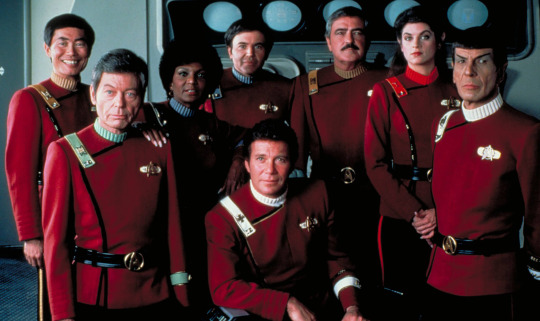
Star Trek II: The Wrath of Khan (1982). Everyone turned red with anger.
In Star Trek: The Next Generation, Roddenberry reunited with Bill Theiss, and together they decided to bring back the iconic miniskirts as part of the uniform, but with a twist—they wanted to make them inclusive. In The Next Generation, male crew members were occasionally seen wearing the same miniskirts or “scants” (a hybrid of skirts and pants), reflecting Roddenberry and Theiss’s vision of a future where gender norms no longer dictated clothing choices.
However, the social climate of the 1980s and 1990s wasn’t as receptive to this progressive idea.
“Having both actresses and actors in skirts was meant to diffuse any sexist accusations that might have been associated with designs from the old show,” Theiss explained. “It’s also fashionably probable that, 400 years from now, men would wear skants. Even so, there was usually a problem on the set,” he admits, “because some wisecracks were always made.” Theiss emphasized that he wanted his actors to feel at ease in the designs. “I won’t force an actor or actress to wear something they’re not at least 80 percent comfortable with.” [Source]

While Theiss’s designs were undeniably groundbreaking, he was known to be a challenging person to work with. Constantly preoccupied with time and budget constraints, Theiss had little patience for anyone—whether they were directors, producers, or even Gene Roddenberry himself. He was even less tolerant of people who approached him simply to praise or critique his work, or even just to say hello. His philosophy was simple: “Better to be rude than to delay filming.”
Actors, extras, and costume assistants often recalled how Theiss would dart around the set, frantically hemming, tucking, and adjusting costumes between takes. Many of the alien outfits seen on the show weren’t actually "costumes" in the traditional sense. Instead, they were often assembled from patches, ribbons, scarves, curtains, and wire, with actors being "stitched into" them directly on set. [Source]
For example, Janice Rand's iconic beehive hairstyle was crafted from several wigs braided together over a cone. Grace Lee Whitney, who played Rand, recalls running back and forth between the dressing room and Roddenberry’s office with Theiss, constantly piling on more hair. Each time, Roddenberry would stare at her intensely, then declare, “Higher!” Whitney and Theiss would rush back to add more wigs until the hairstyle reached its iconic height. [Source]

One Smithsonian Institute employee, who worked with Theiss in 1992 while preparing for a Star Trek costume exhibit, recalls combing through the Paramount warehouse filled with racks and boxes of costumes. She was amazed to discover that most of the "costumes" were actually scraps of fabric neatly hung on a single hanger. Yet, when these scraps were sewn, tied, and pinned together, they became the iconic designs we now associate with Star Trek.
Andrea Weaver, one of Theiss’s fellow costume designers on the original series, remembers:
“Bill Theiss was a creative designer. His designs for Star Trek were original, rather than distilled from other sources or redefinitions of previous works. This is what I appreciated about Bill Theiss. I thought he was a truly unique and rare costume creator.” [Source]
William Ware Theiss’s contributions to Star Trek are legendary. His uniforms for both Star Trek: The Original Series and Star Trek: The Next Generation remain iconic, instantly recognizable even by those who aren’t fans of the franchise. His innovative, DIY approach to creating futuristic costumes brought a distinctive charm to the original series and left an enduring legacy.
Here are some of his most memorable designs:


Left: Season 2, Episode 11: "Friday's Child" Right: Season 3, Episode 13: "Elaan of Troyius"
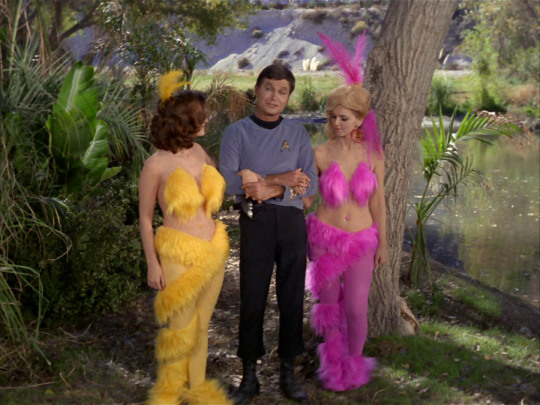

Left: Season 1, Episode 15: "Shore Leave" Right: Season 3, Episode 20: "The Way to Eden"
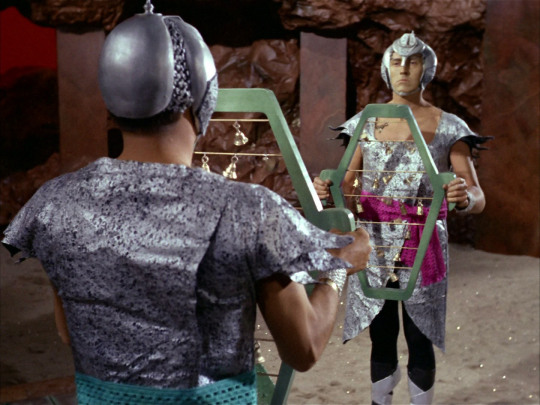

Left: Season 2, Episode 1: "Amok Time" Right: Season 1, Episode 23: "A Taste of Armageddon"


Left: Season 2, Episode 9: "Metamorphosis" Right: Season 1, Episode 6: "Mudd's Women"


Left: Season 3, Episode 5: "Is There in Truth No Beauty?" Right: Season 1, Episode 15: "Shore Leave"


Left: Season 1, Episode 23: "A Taste of Armageddon"Right: Season 2, Episode 16: "The Gamesters of Triskelion"


Left: Season 3, Episode 11: "Wink of an Eye" Right: Season 3, Episode 8: "For the World Is Hollow and I Have Touched the Sky"
#star trek#star trek tos#spock#kirk#s'chn t'gai spock#star trek the original series#star trek tng#star trek the next generation#star trek the motion picture#star trek the animated series#star trek the wrath of khan#articles#eldar of zemlya#captain kirk#james t kirk#behind the scenes#wardrobe#costume#costume design#costume department#filmmaking#gene roddenberry#bill theiss#william shatner#leonard nimoy
145 notes
·
View notes
Note
How do your takes on the boys set them apart from others do you think?
I'll be refering to them with their call names in this one
Targe(Killer) is a little difficult to say this for, because I think he's pretty standard. I'll say maybe that it's his loyalty to Nightmare that makes him unique. I haven't seen a lot of people explore that close friendship they have going on, the unwavering loyalty that doesn't often get explained. Killer owes Nightmare his life for rescuing him from his AU. Also, Targe is really, really competent. Scary smart, thinks quickly on his feet, and doesn't let his authority go questioned. He's a fantastic leader, not just a chaos gremlin.
Mote(Dust) is also hard to answer this for since I don't have a ton of other Dust interpretations to go off of. I'd say he's maybe a little more down-to-earth and... present? Than other takes I've seen on him. That he's not so lost in his delusions constantly. They're there, they're integral to his character, but he's also clever and resourceful. He's quiet, but he pays attention. I think I've said before that his character is the one closest still to his canon counterpart-- he's really just Sans who had an infinite run of Really Bad Days.
Haft(Axe) is a lot more chill than other Horrors I've seen. He doesn't regret what he's done at all-- he did what he had to in order to survive, and he's settled whatever guilt he might have had over that fact. He's also still blisteringly smart, and I have seen Horror played to be a little... dim sometimes, which does him an incredible disservice IMO. His 'canon' self (in the HT comic) is still smart, just a really jaded and kind of twisted survivalist. Haft has gone past that and into resolved survivalist. Suvival by whatever means necessary-- he had to defend himself and his brother more times than he cares to admit. Still... he's a big softy under it. He's a kind person at heart, he's just not gonna agonize over doing whatever needs doing. Haft also has a better relationship with food than I've seen portrayed. He's had time to work on it in his service to Nightmare.
Saltire(Cross) gets along with the guys a lot better than other instances of Cross I've seen with the BSG. He's also not as guilt-ridden, as his situation is fairly permanent. He's safe and secure in Nightmare's Hold, he does what he must in order to get by, and all things considered... it's not so bad. He has good food and drink, a nice room, gets to stretch his legs a bit with multiversal jaunts, a dedicated place to train, and a leader who respects and appreciates his capabilities. He's free here. Still, he's pretty withdrawn and takes a long time to trust, especially if someone (Killer) has stung him in the past. Sal... wants to move forward, even though his past weighs him down heavily. He reminds me of a big standoffish white wolf.
Sorpor(Baggs) doesn't have a whole lot different than his source material. I try to write him as close to canon as I can. The most he has that's different is that he's a little taller and knows about the multiverse. The latter can and probably will cause some interesting divergence from his canon timeline, considering he's aware of resets and how they can go (read: really badly). He has perephreral knowledge about some other things that can happen to the underground as well (Flowey, namely-- he wasn't present for the Photoshop Flowey fight, but he heard about it in therapy sessions). I'd say over time he's also gotten a little bit more direct because trying to manipulate the guys into what you want them to do is harder when they'll dance around with you. Straight and to the point gets more results with them, so he becomes a little more forceful. He also sleeps on a fairly regular basis, which makes him much more pleasant to be around constantly.
Umbrose(Nightmare) is fairly standard of the "classy" Nightmare variety. He enjoys his finer luxuries and arts, speaks largely without contractions, and uses big words. He likes to exude elegance and charisma, because while fierce can achieve results, it takes much less energy to simply... coax others into doing what you want. He's had years to chill out from utter violence, so he elects to do things in a fashion that doesn't tire him out consistently. He's also a fantastic leader. He treats all his underlings fairly and sees to it that they want for nothing. Ensuring their loyalty is important to him-- otherwise they could turn on him, and that would be bad. (I have some issues with the more abusive dynamics you see around with the BSG and him. You can only tettorize and threaten your minions into submission for so long before they plan mutiny). He's pretty chill, but no less intense in pursuing what he wants-- he's just smarter about it.
Aubade(Dream) is way more mature than a lot of takes on Dream I've seen around. He is tired. He wants to stop fighting with his brother. He doesn't understand where things went wrong and it eats him. At his core, he is existentially exhausted, but continues to do what he does out of duty. Certainly, he loves his friends and they do make him genuinely happy... but he's so tired, and if you look deeper into his actions, it shows. He also swears. He's not the perfect angel that can do no wrong, and he knows it. There are necessary evils that even the guardian of positivity must do. He's also aware that positivity does not equal goodness, and negativity does not equal badness. He's a little jaded, but understands that balance is a requirement in the multiverse, and so he has to keep doing his job. He's not afraid to take a life or beat someone to a pulp, though he'll issue warnings before he does.
Haboku(Ink) is a little more stable by proxy of being around his friends so much. Dream helps to remind him to take his paints regularly, and Blue will bully him into it if he has to. He's clever, too clever by half. He'll play to someones ignorant perception of him and has no issue letting them continue to think that he's an idiot with the memory of a goldfish and the attention span of a squirrel. He also enjoys stirring shit. He'll cause trouble just to cause it sometimes, but usually is good about not doing anything that will hurt he or his friends. He's fairly dutiful as well, and will protect the multiverse by any means necessary. Any. means. He is otherwise a pretty happy goofball who likes to make sure everyone around him is doing okay. He's honestly a sweet person if you're in good with him. He doesn't like to see unnecessary suffering.
Zaffre(Blue) has a knowledge of the multiverse and has been travelling it for a while. He's of the 'Jaded Blue' variety who tends to help Dream be Ink's leash. Still, he's a very happy guy who loves adventure and loves his friends. He's very passionate. He's no-nonsense. If you mess with what he cares about, gods grant you mercy because he won't. He hasn't killed, but he's certainly beaten a few people within an inch of their life in self defense or in defense of others. He's scary competent, and has a sense of duty to the multiverse much like Dream does. He is, at his core, still a Sans, though, so he is also incredibly intelligent and observant. He also still likes puns and practical jokes, which is not a trait I see applied to Blue very often! He does the whoopee cushion in the hand trick.
#k answers#k headcanons#feat. r&r crew#feat. star sanses#interestingly enough I don't have call names for error or xchara#wall of text and character meta ahead
44 notes
·
View notes
Text
Eclipse

Been working this theory for a while and I finally want to lay it out there now that the Final Shape launch is over; I think the relationship between the Witness and Veil may be some very clever narrative sleight of hand.
We know the Veil is the other side of the Traveler's coin, that they share a connection and that the Veil connects us all. It is a web of consciousness, of mind and memory. It's a big concept, but one that they've kind of kept their cards close to their chest about still. The Witness has instead been the focus, which has led a lot of the community to attribute many Darkness related mysteries to the Witness.

So here's my idea (and it's a long shot, just bear with me); what if the Witness is a very good and compelling red herring? We have references to the Veil way back to D1's files in Crota's End, where there is the Oversoul, a real concept closely associated with the idea of the Veil, which I believe (source?) does touch the Ascendant Plane. Oryx communed with the Deep via a ritual to summon it into an ogre, something much more akin to the Witness and Maya's rituals with the Veil than a simple encounter with the Witness. And remember, Xur told us that the Traveler has a dark mirror, long long ago.

The Veil name also appears in the files of Shadowkeep, which feels like a crucial moment in the current arc of Destiny. In Beyond, we finally enter the Lunar Pyramid and are spoken to by the Witness through our Ghosts. We reach a Dissenter statue (remember, these were created with the binding power of the Veil), and receive a resonant orb before being whisked to the Black Garden, where the Witness speaks to us. We later recieve Unveiling from that orb, which is how we are told the story of the Gardener and the Winnower.

We know from Osiris that the Veil whispers an electromagnetic language that resonates with our minds, but is indecipherable without an interface. I believe that orb is just one of many Veil Interfaces we've seen in the past, and that Unveiling was indeed written by the Veil, the Winnower. We also know that Egregore is something linked to the Veil, not the Witness. It festers where the Veil has touched, but is more elusive where it currently is operating.
What we see is the mushroom, the fruit of the fungus. The fungus itself is a vast mycorrhizal network of filaments growing and working unseen below the soil, often barely connected to the fruiting bodies we observe. Similarly, we have observed Ghosts—Hive Ghosts included—without understanding the nature of the unseen filaments that may guide us.
This is what I find so fascinating about the idea; Destiny's story has always been built on secrets, mysteries, and esotericism. The veil between life and death (or the material and immaterial world) is a very old idea, one that could easily be vaguely sketched out in preproduction as the "dark side of the Traveler" with the details left for much later. This could explain the early speculation/leaked plot details that "the Traveler is evil," simply a misunderstanding of a more complex idea that hasn't begun to be realized
But how do you make its presence felt while keeping it hidden? You connect it to everything on a core conceptual level, and then confuse and distract. You introduce a mysterious villain, and the concept of a different, harder to understand "villain", and allow them to be conflated. Both concepts remain elusive and uncertain for a bit until Witch Queen, the Witness is revealed, all while the person who hid the Veil teaches us about the Darkness. Immediately, this feels like the big picture. And so naturally, our theories pivot to center on the Witness, not realizing that it is not the pyramidion itself, but rather the first stone laid to support it. Then in Lightfall, we discover the Veil. So now we have two closely related concepts, a universal web of consciousness and the gestalt being that was created in an attempt to emulate the web. Like the Black Heart acting as static in the Traveler and Veil's connection, the Witness placed itself between the player and the Veil.

See who's robed as if a god, who stands with pride above the rest! Destroy this ancient nameless fraud! Destroy the one whose death was blessed!
Perhaps it even tried to take its place physically.

And now that the Witness is gone, we have Echoes, objects reminiscent of the Veil's color and kaleidescopic pattern, a result of the Darkness binding the Witness being released and intermingling with the Light of the Traveler— a mental force taking physical form.

[u.2:11] We live too long for regrets. You taught me that. Don’t forget the House of Light.
[u.1:12] If I can find the time, yes. Not all of us conjure Echoes.
[u.2:12] Reflections, Saint. I have no need for Echoes anymore.
[u.1:13] What do you mean? What’s the difference?
[u.2:13] One is a manifestation of Light. The other… reserved for Taken Kings. Better suited for traversing the Sundial because of what lies at its core.
[u.1:14] One day you’ll have to tell me exactly what you and the Guardian did to bring me back.
[u.2:14] We did what we had to. Trust me.
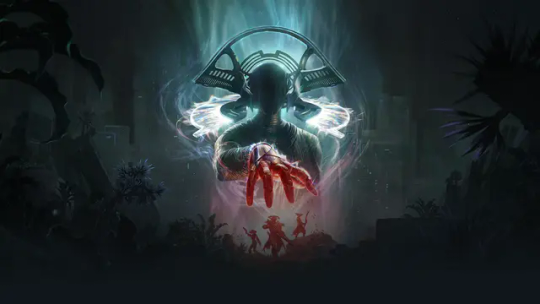
Eyes up, Guardians.
Hello again, my trenchant Dante. You have stepped in and out of sharp-edged worlds, hewn gods into blunt fractions, twinned yourself with powers whose names cannot even be held in the language of little gray cells. You think yourself very high up on the pyramid of contumely. If you only knew how high that pyramid goes. Higher than I knew when my radiant killer unsung me from biological squalor, or when I witnessed a royal secret turn death into a chrysalis. Higher than I described in my journals, or told to our mutual three-eyed friend. Higher than even I, sailor upon the Sea of Screams that I am, can yet see. Perhaps I will tell you about them. You are right to ask why I would do so. Very good, dear squanderer, your intentions have grown sharp as thrallteeth. You see, they know. What you are, what you were, what you will become. They know. What lean tithes you are to them. Soft whetstones make for dull blades. This I define as the truth and tension of the rope: to bind, one must apply force at both ends. I think perhaps I will tell you after all.
Hope you enjoyed this theory, even if it's a bit out there! Would love to hear your interpretations and thoughts, as I've been fascinated by the Veil and its place in this story since Lightfall (and Shadowkeep if this theory holds!)
4 notes
·
View notes
Text
I disagree.
This take engages fan content in bad faith and has "not like other girls" energy.
It's ridiculous to think that all fandoms have become some kind of muddy gray color just because you can point to tropes like "there was only one bed!" Or "all these characters now; live on a ranch, work in a coffee shop, are in college together, have to survive a zombie apocalypse, live in Jane Austin's England."
Specifically from my experience with different fandoms they each have something different to offer.
TeenWolf has so so many references to scent. What it's like being normal among the extraordinary. Living with ADHD.
Star Trek has mind melds. Moral questions about the value of life. What it is to be trapped in your parent's shadow.
FMA has more than an average amount "how to deal with guilt, ptsd, and parentification from 7 or 8 years old."
GO has what it is to fall in love over thousands of years. The ability to miracle some things and not others. Discussions of right/wrong vs lawful/illegal.
911 has sooooo much found family.
Sherlock has explorations of neurodivergency and what it is to finally put someone else first and have someone put you first... and red pants...
Anything well written should be able to be engaged with on multiple levels. If a children's book isn't also interesting for adults, it is not reaching its full potential. If a fanfic doesn't make sense without any knowledge of Canon, then it isn't a complete story. (Which doesn't make it bad necessarily, just not complete without knowledge of the source material.) 200 different sets of characters can meet and fall in love in coffee shops, and that's not any different than the 200 holiday romance films on the Hallmark Channel every December.
Complaining that fan fiction involves a lot of the same tropes is as silly as complaining that horror films use jumpscares.
All fiction, fan or otherwise, is in conversation with other literature and philosophical ideas. "Anne of Green Gables", "The Lord of the Rings", Anne McCaffrey's "Pern", even Cormac McCarthy's "The Road" are all part of an endless conversation between authors and culture and genre.
It's short-sighted to label it all generic and then pretend you're clever for thinking so. We're all following scripts written for us by our ancestors and adding our own flair. Just because you don't enjoy a particular thing doesn't mean nobody else should.
there are many complaints about how fandom tends to focus too much on shipping to the detriment of everything else, but frankly, i really don't think that's the real issue with it. not that the hyperfocus on it can't be grating at times, but i think what really bothers me is just 'fanon' in general. like, at this point i'm willing to say that fanon is its own entity and its not even unique to any work in specific. it's a one size fits all of generic, pre-made tropes that will be forced into each and every piece of media that gets even a bit of attention, even when these tropes and scenarios don't fit the personality of the characters or are in any way related to the original story they are supposedly drawing from. basically stripping everything that makes these works unique in any way just so they can be somehow twisted and shoved into yet another college coffee shop au. it's why you see people saying that they read fanfiction or engage with fandoms of works they haven't even consumed, which sounds bizarre at first (shouldn't you be a fan of something you make and/or consume fan works of?) but makes sense once you realize that yeah, once anything gets hit with the the fanonfication beam, it really does not make a difference whether or not you are even familiar with what this fanwork was even supposedly about, because they all become pretty much the same, like dolls reenacting the same little plots and following familiar scripts over and over again
2K notes
·
View notes
Text
What Is Search Engine Optimization Advertising And Marketing As Well
https://i.ytimg.com/vi/CuKRC5R7gnI/hqdefault_124266.jpg
What Is Seo As Well As Just How It Functions? First, you'll need to identify your particular SEO position goals for your internet site. Are you wishing to drive traffic to make a sale on your internet site? Do you intend to monetize your site making use of ads and raise web traffic and clicks for more Go to this site profits? Your objectives described in your advertising strategy will certainly determine which types of search engine optimization material you need to be focusing on. Take into consideration creating a new page or message for whatever involving your organization so you can get more pages indexed. A content calendar will assist you stick to a routine material publishing routine, as well as prevent you from rushing to choose a subject for your brand-new material in the nick of time. One of the most relevant and global one locally is Google My Company. If you haven't claimed your company in Google My Service, you most likely aren't getting indexed locally.
Exactly how SEO functions step by step?
Action 1: Locate keywords.Step 2: Place search phrases in the page title.Step 3: Place key words in the web page URL.Step 4: Place key phrases in your meta description.Step 5: Put key phrases in your H1 text.Step 6: Use keywords in the web page's content.Step 7: Build links to your website.Step 8: Display your ranking. SEO is the procedure of expanding a site's natural search web traffic. You do this'by placing in organic search results page. SEO is very important due to the fact thatyou're unlikely to rank well without Today, over a quarter of all Americans have a clever audio speaker. Yet 72% of marketers have no plans to maximize for voice search. Simply put, you require to up your mobile game or site to suffer at the end of Google search engine result. So now is the moment to discover the fundamentals and apply ideal methods on your website. Use the meta to urge clicks, which will drive web traffic and also result in more company. Metadata informs the individual what they can expect to find if they click on the page. Marketingbibliothek HTML in this context refers to fundamental optimization that aids increase positions and also click-through-rates. On a CMS like WordPress, you need to be able to apply everything defined below without touching your site's code in all. Put simply, you're going to get even more people to your site if your pages include key words customers are in fact looking for. The very best pages-- those that search engines wish to send users to-- are unique pages. No search engine optimization specialist understands all of the elements that comprise Google's (or any kind of internet search engine's) formulas. Nevertheless, years of screening as well as public statements by Google have revealed some critical practices essential to effective search engine optimization.
Performance Marketing Agency of the Year 2022: Impression - CampaignLive
Performance Marketing Agency of the Year 2022: Impression.
Posted: Thu, 16 Mar 2023 07:00:00 GMT [source
youtube
2 notes
·
View notes
Text
Correspondence, Chapter 01

Pairing: HotchReid
Summary: An AU where Reid never joined the FBI, but got roped into consulting for the LA field office while working and teaching at Caltech. Hotch gets his email referred from a fellow agent, and they start to work on cases together -- until they start talking on a regular basis. Regular becomes frequent, frequent becomes constant. They know nothing about each other, but they don't really mind.
Rating: Mature/Explicit (eventually)
Chapter CW/notes: some profanity, a side character who is a dick about Reid, set in season 06, self beta’d
Word Count: 2437
Masterpost Link
Ao3 Link
--
Chapter 01
--
March 2010
--
Dr. Spencer Reid
(Current Tenure: California Institute of Technology): Fred Kavli Professor of Theoretical Physics and Mathematics; Director, Walter Burke Institute for Theoretical Physics, Department Head of Mathematics, Physics, and Astronomy at Caltech.
- (Degrees, in order) Ph.D. Mathematics, Caltech, 1995; Ph.D. Chemistry, Caltech, 1997; M.A. Nuclear Science, MIT, 1999; Ph.D. Engineering, MIT, 2000; M.A. Sociology, Columbia University, 2001; M.A. Philosophy, Georgetown, 2001; Ph.D. Psychology, Georgetown, 2002; M.A. Applied Analytics, Columbia University, 2003; M.A. Socio Economic Statistics, MIT, 2004; M.A. Geology, Caltech, 2006; Ph.D. Geography, Caltech, 2006; M.A. Economics, Caltech, 2008; M.A. Brain and Cognitive Sciences, Caltech, 2009
- (Teaching positions, in order) Professor of Mathematics, Caltech, 1995-1997, Professor of Mathematics and Statistical Analysis, MIT, 1998-2005, Visiting Associate, Georgetown, 1999-2002; Professor of Chemical Engineering, MIT, 2002-05; Kavli Professor, Mathematics, Caltech, 2005-; Professor of Theoretical Physics and Mathematics, 2006-; Deputy Chair, 2005-; Director, 2008-.
“Jesus.”
The dossier is just an information sheet; no photo ID, no news articles beyond text component pieces, but it is a thick stack of correspondence and case consultations that S.S.A Aaron Hotchner holds in his hands.
“Five Ph.D.’s and eight separate M.A.’s in fourteen years? What was he doing before that?”
“Who knows? You don’t earn a Ph.D. overnight, even if his accommodation sheet makes ‘em look like they pop up like mushrooms,” Mark Anderson says, audibly tired through the phone speaker on his desk. He was one of the Unit Chief's from the teams at the FBI L.A. field office, who’s phone number was given to him by an old friend, Sam Cooper -- another BAU team leader. Hotch had hit dead end after dead end on this case, and sitting at his desk in Quantico, Virginia, he looks down at the recommended consultant’s extensive list of degrees and teaching positions with a building headache behind his dark eyes. He wasn’t a fan of Anderson, or his briskness, but at this point he’d take anything he could get. “I’m pretty sure that man has never lived outside an academic field. He’s a handful, runs my agents up the damn wall, but he knows his stuff.”
“I hope so. I’ve been on the phone the past three days trying to find someone with a background in Obscure Cognitive Linguistics,” Hotch reads from a separate file, filled with violent images and depraved acts described in morbid detail. “Our unsub sites a very particular thesis about a Study of Language from a Cognitive and Developmental Law, and I keep getting sent to experts in adjacent fields. I don’t see anything in this Dr. Reid’s background about language.”
“Oh, trust me, Hotch -- you’ll get more than you bargained for. This is your guy. He’s basically an expert on everything, and if he doesn’t know anything about languages I’ll eat my tie. He never shuts up.”
Frowning at the speaker phone, Hotch keeps his comments to himself. He’s sure that Anderson probably doesn’t appreciate having an old professor puttering around the field office, but that didn’t mean he had to insult the man. Especially when he was there as a consultant.
“Okay, fine. Thank you. I’ll give him a call now-”
“Oh, you don’t want to do that. Just send him an email. Trust me.” Anderson all but groans like a petulant child. Graining on Hotch’s nerves excruciatingly.
“I’m sure he’s busy enough with his students, he doesn’t need to be fielding emails from the FBI,” Hotch hedged, still frowning.
“Not too busy to write you a dissertation in reply, I’m sure, but you’ll at least get the answers you need. You could be on the phone with him a half hour before you get to what you called about. Hopefully it won’t take you too long to sift through.”
Alright, now he is done listening to the other agent.
“Right. Thanks, Mark.”
“Anyti-” Hotch hangs up on him before the man could make any other remarks. His patience is non-existent after the past week and this extremely brutal case that only seems to compound exponentially in it’s viciousness with each passing day. If Anderson felt like being an asshole to some old man with nothing better to do than rack up Ph.D.’s, he could do it on his own time. Hotch needed help, and this man seemed to be the only person around who might be able to finally do so.
Dr. Reid’s office number is in front of him, as well as about three different lab location phone numbers, and one email address connected to the school faculty. He considers for a moment just ignoring Anderson’s advice and calling the old professor, but he has a meeting with his Department Chief, Strauss, in twenty minutes and the team would be arriving from canvasing the dumpsites soon.
So with a suffering sigh, Hotch pulls up a new email (for what feels like the millionth time for this case) and composes a standard correspondence introduction. Who he is, credentials, case numbers and specifics as far as clearance rates for civilians go, and then finally the questions he needs answered. There is something about this particular thesis that has to be very tongue in cheek to the unsub, saying something that isn’t really there, and this could just be another dead end -- but if it led to them saving a victim from becoming another dead body, he is willing to give it one last try.
Thank you for your time, S.S.A. Aaron Hotchner Unit Chief, Behavioral Analysis Unit, FBI Quantico, VA.
Then he hits send, and leaves the response up to the universe.
-
The team came up with nothing fruitful. Strauss proceeded to ream Hotch six ways from Sunday for wasting valuable bureau resources and coming up with zero results. His day was spinning down the drain in a hellish cyclone when he sits down behind his desk in his office an hour after leaving it. Case files still piled to one side, grotesque photos stacked within them, and Aaron Hotchner wants nothing more than for them to disappear. For the case to be solved and to be able to go home to his son and his quiet house. But there was no break in sight, no new information, nothing.
Except a new email in his inbox.
Agent Hotchner,
I know that thesis paper well. I can help you.
All air seems to have been sucked from the room as Hotch reads the words a couple of times, not quite comprehending after the morning he has had that someone wasn’t giving him more bad news. That this Dr. Reid said he could help him.
A single click of the email opens up the correspondence reply, and the agent is met with a giant wall of text. Scrolling down for pages, and a quick skim of the material shows such a complex, comprehensive amount of information that there is no way it’s just copy and pasted from any one source. Or even several. It’s a long email spanning a vast number of pages, covering every topic he had asked about (and then some).
The thesis paper, the tongue-in-cheek citation from the unsub, how this killer is acting like he’s being clever when it’s really ‘very obvious what he’s doing, as long as you know the paper’ and detailed links and quotations and references to locations and side tangents on items mentioned that could be evidence to look for or weapons of choice, and so much else Hotch’s head feels like it’s spinning. Like reading the cliffnotes of a complex spy novel, with all the spoilers in one place.
It takes him half an hour to read through everything Dr. Reid sent, meaning the professor had to have been typing a million words a minute from the moment Hotch had emailed him to get everything replied so quickly, and Hotch was baffled to realize that an old man with a handful of Ph.D.’s and no FBI training just solved his case.
Not a figment of speech.
Dr. Reid just solved the case, without even holding the file in his hands.
Hotch is dialing a phone number on his speed dial without even looking away from the screen.
“Garcia? Call the team into the briefing room, and phone SWAT to mobilize. We’re going down to the riverfront in thirty minutes.”
“--Wait, what are you talking about? Did you figure out the unsub’s code?”
Not me, Aaron thought to himself, standing up and printing Dr. Reid’s email after forwarding it to the entire team and their tech analyst, Penelope Garcia. He didn’t have time to explain it that many times, and the amount of information in that single email would be enough to send any of them tumbling heels over head. But it solved every aspect of their case. Hook, line, and sinker.
And the clock was ticking.
“Now, Garcia.”
He rushes from the room with the stack of files in his hands and his laptop open to Dr. Reid’s email. Not even thinking to thank the man for his help as he heads across the bullpen with profound determination.
They have work to do.
-
They catch the unsub that very day.
Quick, efficient, completely by surprise. They saved Amanda Sutton and another girl they hadn’t even known was missing. No one died. None of his team was hurt. The unsub hadn’t confessed, but Rossi and Morgan had played him like a fiddle in interrogation and now all of his team members were walking to the elevators leaving for a long weekend where they wouldn’t have to worry about serial killers or another dead soul on their conscience. Today was a win. As close to a win as they ever can get, in their line of work.
And it isn’t until he’s back at his desk, the hours ticking into the night, that he opens up his email and there in his inbox is the very reply that started everything. Dr. Spencer Reid. CalTech Department Head. Professor of everything under the sun. Expert on anything, even the obscure.
The reason Hotch will get to spend the weekend with his son, without the overbearing aftershocks of a case gone so horribly bad plaguing him.
His hands are moving before he can stop them. Opening up the email, typing out a response to Dr. Reid thanking him for his help. Relaying what happened, detail by detail much in the same fashion he had completed the paperwork piled on his desk. Letting him know that his information really did end up helping them. All of it. Even the side tangents.
I don’t know how I can ever thank you for the extensive consideration you gave this case, or how to explain how it solved it so seamlessly, but your time and effort does not go unnoticed by me.
Okay, so maybe he fluffs it up a bit more than the dreadful bullet-point list descriptions required by the Deputy Chief and the Director and SWAT Team justification reports. Just so it doesn’t look so inadequate in comparison to the man’s thesis-paper-length email he sent to aide Hotch and his team. The passion he has for his work leaps off the page, but it was a lot -- and if the old man put that much dedication into a basic FBI correspondence email, then he was probably used to it being a thankless effort.
Hotch sends the reply, and continues with his work. He always takes a bulk of the paperwork, so his team can go home and rest and recharge. He needs them at their best for each case, and if that means he spends a couple hours longer after when they finish a case, it is worth every minute. But this time, once he finishes, he gets to take the coveted time off as well.
It’s as he’s finishing up, everything stacked neatly and ready to be dropped at records, in the mailroom, Strauss’s office, the director’s, and he’s about to log off his laptop that he sees a surprise -- Dr. Reid replied to him, again.
It’s much more brief this time.
Agent Hotchner,
I’m so glad I was able to help you.
You are one of the only agents to reach out and tell me how the case went after my consultation, and I’m very grateful to know that my information actually helped your team catch the killer. I know I tend to spout facts at random, but I do have methods to my madness and it’s such a nice change to correspond with someone who understands that.
My services are always at your disposal. Anytime. Whatever I can do to help.
Sincerely, Dr. Spencer Reid
Hotch types out a brief reply. Thanking him for his offer, for lending him his expertise, and letting him know in not so many words --
I’ll have to take you up on that.
He’d be a fool not to. Someone with that much knowledge and the ability to connect it all in the way Dr. Reid had in the span of an hour? He could be a real asset to the BAU, as a permanent consultant, even through email correspondence.
He sends the reply just as he stands to leave. Turning off his office light, and his chest feels lighter for the interaction. For giving the professor that sense of assurance that what he had to say did in fact do some real good. Hotch even finds himself smiling softly, sadly, that he has also found a little bit of solace in helping another lonely old man across the country find a sense of purpose that night. Who was working late, as well, despite it being the end of the week. Speaking to not much waiting for him back at home, in whatever shape ‘home’ takes for the man. But Hotch can relate to that, too. Jack is at Jessica’s until the morning, and there is nothing at his apartment to greet him but silence and bare walls and memories he’d rather not dote on. Maybe this Dr. Spencer Reid is in a similar boat, finding comfort in his work when he can. He certainly seems to, with the amount of time he’s poured into his doctorates and degrees. In the number of departments he runs and monitors.
Hotch can’t help but feel a connection, a companionship between empty offices. Thousands of miles apart, but maybe -- possibly -- at least similar in that aspect.
Not so alone, even if only for a brief moment.
-
(tbc...)
-
Tagged list: @spencehotchner @ssa-sarahsunshine @gothamapologist @reidology @marsjareau @dragon-snaps-fandom @emmyraebird @just-an-emo-rat @aaron-hotchner187 @dk18077 @more-heid-pls
#omg i forgot to do tags#Jesus so ive been so excited for this and here it finally is and i fuck it up .2 seconds in go me#this is a S L O W B U R N fic and we are starting all the way at the beginning and im so excited im kind of shaking#updates every saturday evening#message me if you want in on the tag list#also on ao3#HotchReid#Heid#katyswriting
65 notes
·
View notes
Text
House of The Dead Headcanons: Bosses (Part 1)
Headcanons for the bosses of the first game, not counting Magician cause he’ll get his own post. This will not cover Chariot and Hangedman in Scarlet Dawn.
general warning for possible disturbing/upsetting content, under the cut due to length
Chariot
He/they/it - no preference for one set over the others. They don’t care that much honestly. They just exist. Whatever people refer to them as works, they’ve heard all three.
It’s sapient but like. They don’t care about human standards and don’t act quite human either.
Only really driven by their instincts and what they’re supposed to do. Not much personality or character.
Obligate carnivore
Fairly persistent, analytical as well. Almost like a robot.
It experiences the same hard-wired hate towards humans, seeing them as a food source and pest to be eradicated. It does not have any deeper reason or hatred and it realizes that. It doesn’t care. It has to eat and it wants to do its job.
It tends to get really rough/brutal with how it deals with them.
It’s easy to get on his nerves, he’s somewhat on the hot headed side.
And he can get pretty fucking angry.
That being said he’s more patient with the other creatures, at least by a little. Hangedman likes to test this patience.
Chariot did not meet Magician but they were aware of his existence. They knew they had to protect the dormant creature and did so by guarding the mansion, but they actually felt apprehensive towards him.
Can talk, but does not really do so. It is not always easy for him to. Has a lot of trouble forming sentences and conveying complex ideas.
So when he does speak it’s in bits in pieces - subjects or actions without any words connecting them, in a flatter tone
Gets sick somewhat easily. it’s not uncommon for him to become ill.
It can get pretty disoriented when stressed or hurt/sick.
So basically it gets sick rather often and spends these bouts of illness wishing it was dead because it’s tired of feeling nauseous and Out Of It.
This changes w/ his resurrection though.
Not necessarily the most graceful or level-headed either
Acts like he is stable and has everything under control, but that is anything but the truth.
Protective and a bit controlling.
Hangedman
He/him
Jackass™
Not sympathetic towards humans, hates a good deal of them. He’s convinced that a lot of humans are scum and sees them more as dolled up bloodbags most of the time.
Obligate carnivore/Sanguivore. Can eat meat occasionally but prefers blood. Cannot stomach plant material
He gets very hungry and has to tend to the Devilons, and the need to target humans is instinct for him like it is with most creatures, but he also uses destruction + causing pain as an outlet.
Doesn’t get along with some of the other creatures as well. Just very disagreeable and hard to approach.
Not always the best with personal space, tends to get way too close.
Hangedman is very clever and smart, but does not always have the motivation he needs to pursue anything that puts his knowledge to good use. He does like reading, though. Chances are, he’s read most of the books in the mansion.
Same goes for emotional intelligence - he has the capacity for deeper emotional thinking and such but lacks the ability to form healthy, meaningful connections with anyone other than the select few he knows and is awful at introspection.
But yeah this guy is. actually smart. Has to get better at applying himself but in general he has his wits about him and can hold conversations and stuff.
Kind of a pessimist and kind of smug - patronizing and mocking towards people he dislikes.
He either obsesses over or has no interest in things, barely any in between.
Very fond of the concept of vampires.
He is actually fairly close to Chariot, the two have a rivalry, perhaps a friendship. How Hangedman - an annoying, petty bastard- managed to form a bond with the robotic yet irritable Chariot is anyone’s guess.
His only other “friends” would be the Devilons/bats. They seem to understand him somewhat, but there’s not much more except for the fact that they depend on him a lot. Hangedman, however, cares for them greatly even when he does not really show it.
Very good sense of hearing, almost too good. He’s rather sensitive to sound and sometimes it can get overwhelming.
He would keep Curien company sometimes, and knows a bit more about the doctor because of it. He learned about Daniel, Curien talked about him a lot before he completely snapped. He'd try to comfort Curien whenever he was upset over Daniel, but there wasn’t much he could do. He was actually pretty uncomfortable for him.
Somewhat apathetic, and very detached. However he can be kind if he actually stops to consider others. Curien was the only person who really saw this side to him, though, and even then not to the full extent.
Honestly the way he feels and expresses empathy and his emotions in general is just... weird and very dysregulated. He’s aware of it and concerned, he doesn’t know how to deal with it.
Does not get upset often- or at least he’s alright at hiding it - but when he is angered or afraid he can become frantic and irrational, even violent.
Obsessive in general - hard time letting things go, forms attachments to certain things and people and the like...
This happened with Sophie, who oversaw most of his development and life in the mansion. Meanwhile, she didn’t want anything to do with him because she couldn’t look at him without thinking about how he used to be human, she felt guilty and disgusted at Curien and herself - and Hangedman for being the product of such horrible experiments. This led to her not really giving Hangedman the sort of attention he wanted, he wanted her attention and care but didn’t get it.
He didn’t pull any of that “if I can’t have you no one can” shit his obsession just turned from “please pay attention to me” from “ok fucking die”
He needs a lot of enrichment in order to stay happy. He’s allowed to fly around the mansion (outside and some inside areas), interact w/ researchers - mostly those assigned to take care of him and has access to some books and other media with Curien’s permission.
Hangedman looked forward to meeting Magician, but he was a bit nervous.
Nocturnal, and has more animalistic instincts and habits due to bat DNA. This animal DNA along with other existing conditions and being raised by Curien has resulted in him being kind of a wild card. As of his resurrection, he’s only become more volatile.
Hermit
??? Spider
Solitary creature. Not affectionate but not necessarily aggressive besides towards humans.
Facultative carnivore - prefers and gets most nutrition from meat but it can stomach non animal material and get some nutrition from that.
Chariot and Hangedman are both fond of Hermit, and Hermit is partial towards them both. It’s fairly friendly towards them.
More friendly with Curien though.
The team pet, kind of a little brother of sorts. Though team pet and little brother are practically synonyms
Stealthy, persistent
I do not have much else about this guy. Hermit is Hermit. That’s all.
#long post#the house of the dead#House of the Dead#this is so unbalanced i just rlly like hangedman haha#hangedman#chariot#chariot hotd#hangedman hotd#type 27#cw long post#he's one of few that i have a lot to work with#hangedman type 041#chariot type 27#hermit type 6803#hermit#hotd headcanons
7 notes
·
View notes
Text
Pet Peeves in Thor Stuff
Inspired by a few posts doing this, so thought I’d vent and get it out here.
1. MCU Loki’s Name
I don’t care what the fan-run wikis say. All the official MCU material, including the text of the actual movies themselves, call him Loki Odinson or, for a brief period, Loki of Asgard. Loki Laufeyson is the name of a character from Marvel comics, and him having that name makes sense for that character’s backstory, which is very, very different from ‘adopted at birth and a late discovery’ MCU Loki. Incidentally, Norse Mythology Loki is not Loki Laufeyson, he’s Loki Laufeyjarson, which is a matronym because Laufey is his mother in most Norse Myths.
Loki in Thor 1 was Loki Odinson, Avengers was Loki of Asgard, and he certainly seemed fond of Odin again in Ragnarok and officially reclaimed the title Odinson in IW. He’s called Odinson over and over again in official Marvel publications such as the illustrated dictionary. Please stop using the wrong name. It’s weird and wrong to assume his name MUST default to his birth-father’s upon discovery of adoption, no matter what he’d been called his whole life. Especially when I think it’s pretty clear that Loki vehemently rejects any relationship with that namesake. He literally murdered Laufey to prove to Odin he had only one father, I don’t know how he could be more clear about his preferences.
And yes, I do think that this invalidates the fan-wikis as good sources of information. If they can’t get a name right, you probably shouldn’t trust anything in the article below it. Stick with canon publications.
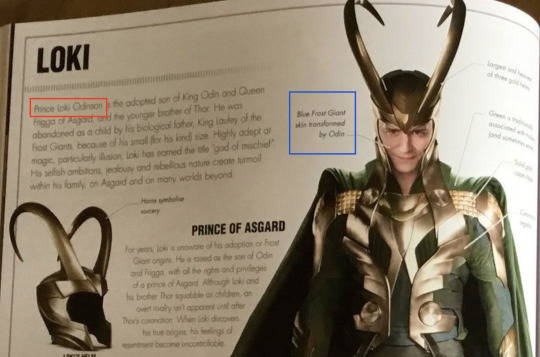
2. The Transformation Spell
And heck, while we’re on this page, yes, the spell keeping Loki Asgardian is Odin’s. I don’t mind fanfic that posits a different origin, because hey, we’re just trying to have fun here, do what you want and I’ve probably read a lot of it already - but this is the canon explanation, please stop messaging me to tell me I’m wrong when I say it’s Odin’s spell doing it. Also, the reason it didn’t break when Odin died is because magic can outlive the caster, as Doctor Strange said. This ain’t the Phantom Menace.
(Incidentally, this dictionary is fun and even has entries for Huginn and Muninn!)
3. Step-brothers and Half-brothers are different things and neither is correct for Thor and Loki’s relationship. Nor is Odin Loki’s step-father.
I don’t see this in the Thor Fandom much, it’s more in articles and reviews I’ve read, but it’s kinda appalling how people don’t know the difference between brothers, step-brothers, half-brothers, and blood-brothers. Not being sure who your second cousin twice removed is I get, but I would hope that these are much more commonly understood. Just to get it off my chest, even though I’m sure no-one reading has ever thought different -
Step-brothers are when two unrelated families are joined by marriage. The children share no biological parents, but their parents are married. Unless Odin married Laufey at some point, he is not Loki’s step-father, and Thor is not Loki’s step-brother. (I mean, Odin’s had a long and probably very interesting and mysterious life, so I suppose it’s POSSIBLE he had a real bender at one point, but even if he had a Vegas wedding to the King of the Frost Giants and then decided to throw away the ring as if nothing had happened, the relationship he has with Loki has always been identified as ‘Father’).
Half-brothers are when children share one biological parent, but not two. So unless that bender with Laufey got REALLY crazy, Loki is not Thor’s half-brother either.
Blood-brothers - So some people will use this phrase to refer to people who are related by blood, but that’s sort of an older phrase. However, for most elementary school kids and in the context of Norse Mythology, it has another meaning - two people, unrelated by birth, who undergo a ceremony that involves blood mixing as an oath of brotherhood. Norse-Myth Loki is usually depicted as blood-brothers with Odin (and, in a few rare stories I read, with Thor, instead, but that’s a long story about how Thor was slowly starting to replace Odin as chief patriarch and therefore subsuming a lot of his traits and relationships). However, in the MCU, neither of these meanings currently applies to Thor and Loki. They are not blood related, and they’ve not undergone any blood oath ceremony either (although you can bet your briskets I’d LOVE to see that and it’s been in my general prediction box/wish-list since 2011. Imagine how happy it’d make us to see Thor and Loki choose to have their relationship, rather than feeling like it was Odin’s decision and they’re just living with it.).
Brothers - if in doubt about any brotherly relationship, just say this and you won’t be wrong. Thor and Loki are brothers, or adopted brothers, full stop. So no more step-half-blood nonsense.
And to be clear, if you’re writing fanfic that re-imagines this relationship, this is in no way directed at you. I’m more venting at the dearth of articles, presumably written by university graduates with an English degree, who can’t seem to keep this straight.
4. Brother is a Proper Noun
While I’m on this brother train, a small grammatical note - ‘Father’, ‘Mother’, and ‘Brother’, if being used in place of a name, are proper nouns, which means they’re capitalized.
Ex. “Stop smearing your booger on my shirt, Brother.”
It’s not capitalized if it’s not being used in place of a name, but is simply referring to the noun.
Ex. 2 “My brother once ate a whole goat without noticing it was still alive.”
Ex. 3 “I never knew we had a sister.”
Sorry, sorry - but I see this mistake a lot while I’m reading and I daresay I make it myself all the time!
5. Frigga isn’t perfect
Real talk, one of my least favourite tropes in fiction is ‘Woman on a Pedestal’. I really feel it denies female characters agency if they’re made out to be perfect lovely angels loved by everyone. I’ve read a ton of great fics that explore the flaws Frigga is suggested to have in the MCU but never got the screen time to deal with, and they are some of my favourites. I’ve also read a ton where she’s endlessly patient, wise, righteous, and oh-so-much-better than that heartless Odin or oaf Thor, if only she’d been in charge the whole time, nothing would have gone wrong! It’s a matter of taste and I’d never tell anyone to not write what makes them happy, but I really do think Frigga’s a better character when you engage with her mistakes and oversights and less-than-noble aspects. Women in the MCU have really gotten a short shaft when it comes to character arcs, flaws, and general humanity. Almost all the mothers are on pedestals in it, and with that comes a lack of introspection. Frigga could be argued to be in that category, but at least there is some material to suggest her imperfections that can be exploited. (Unlike Quill and Stark’s mothers, say.)
I leave it up to everyone to interpret the character for themselves, but for me her weaknesses are that she
tends to deflect blame for her choices onto others, particularly Odin.
sometimes acts to smooth things over without really acknowledging hurt, either caused or experienced.
has a manipulative streak and isn’t afraid to leverage her sons’ affection for her to get them to do what she wants, which is often ‘smoothing things over’.
probably spoiled her kids a bit
has an allergy to giant knives
Personally I like these things about her. They come from her life as a peace-maker, both in her role as a politician and a Queen and in her role in the family. She’s loyal, clever, witty, a confidant, and had the best scene in Endgame by a long mile. Frigga is the mom we’ve seen the most of, and I would love to see more in any form.
AH.... that felt good. I might do another post on my problems with how Thor is sometimes portrayed, but that’s a whole other, very personal, thing. Thanks for reading this dumb thing.
92 notes
·
View notes
Text
I heard that the BBC Dracula adaptation written by Stephen Moffat was really bad, and it made me curious to see just how bad it was, so I decided to watch it for myself. It was not one of my smarter decisions.
But in order that my suffering won’t have been completely in vain, I’ll recap it here for those who are curious as well, to spare you the pain of actually having to watch it. You’re welcome!
Let me describe the viewing experience as best I can.
I have a BBC iPlayer account, so I could watch the show legally. My wife tells me to pirate it instead to avoid giving Moffat the views. She is right. I click on the first episode.
Episode 1
We start with a framing device of a severely ill Jonathan Harker in a Hungarian monastery, telling his story to two nuns. I do not hate this framing device. The original novel was told through diary entries, newspaper articles and letters, so having different characters tell the story of what happened to them to others is a neat way to adapt this type of literary device. The dialogue quickly takes a turn for the ridiculous, though, when one of the nuns, Sister Agatha, asks Jonathan in a silly accent if he had sexual intercourse with Count Dracula. Because queerbaiting? Is vampirism an STD now?
Still, the show tricks us into thinking that it’s going to be a fairly straightforward adaptation of the story as Jonathan recounts how he arrived at the castle, met the Count and became his prisoner. Later, this will turn out to be a sweet, sweet lie, but I don’t know that yet. At first, Dracula looks about a hundred years old and has a bad Romanian accent, but the more he feeds on Jonathan, the younger he gets, and the more refined and posh his British accent. Because this Dracula does not just absorb his victims’ lifeforce but also their knowledge. I find that stupid.
Dracula says the famous “I do not drink... wine” line. Badly. Still, the reference is mildly cute the first time. He repeats the line several times throughout the show, and it gets progressively less funny each time.
Jonathan reads a letter from his fiancee, Mina. In it, she jokes about how she’s going to sleep with all the cute men in the neighbourhood while he’s gone, as well as the adorable bar maiden, if she needs some variety. I sigh as I realize that this is probably what Moffat considers good queer representation.
At one point Jonathan talks about falling asleep, and Sister Agatha proceeds to ask him if he had dirty dreams about his fiancee. She persists with the question, even after Jonathan tells her that that’s private. It doesn’t seem like a pertinent question, but I guess Sister Agatha is just a pervert. Or maybe Moffat is.
Jonathan finishes his story about how he escaped from the castle. He bemoans that he can’t go home to England, because he is such a changed man and he can’t even remember his fiancee’s face. Sister Agatha reveals that the other nun with her is actually Mina. What a tweest! Apparently even before Jonathan told his story, Sister Agatha managed to figure out that he is English, tracked him down, found his fiancee and had her brought over to Budapest. The show is clearly hoping that the unexpectedness of this twist is going to distract us from the fact that it makes no damn sense at all.
It also turns out that Jonathan has become a vampire, and the sight of blood nearly makes him attack Mina. Of course, being one of the main heroes, he was never turned in the novel, not that that matters.
At this point Dracula shows up at the gates of the monastery in the form of a wolf. And I don’t mean that he shapeshifts like an Animorph. He is literally inside the wolf’s body, and he claws his way out of it, emerging at the gates naked and covered in wolf blood. I really don’t know why.
He and Sister Agatha proceed to have a sass-off. My wife makes fun of the dialogue by saying that it’s basically this:
“I’m a badass sister!” “Yeah, but I’m Dracula!” “Yeah, but I’m a badass sister!” “Yeah, but I’m Dracula!” “Yeah, but I’m a badass sister!” “Yeah, but I’m Dracula!” “Yeah, but I’m a badass sister!” “Yeah, but I’m Dracula!”
By the time my wife has finished the joke, the banter is still going on. It feels like it’s never going to end.
The Mother Superior tells the nuns to arm themselves. My wife starts wondering if we’re actually watching a Mel Brooks movie. Also, Sister Agatha is revealed to be Van Helsing. This is not as meaningful as the show seems to think it is, as she and Dracula haven’t had any past encounters. So it’s really just, “Oh, she’s actually a gender-swapped character from the book. That’s cool, I guess.
Finally, Dracula slinks off because he can’t get inside the monastery without being invited. He manages to find Jonathan, now fully a vampire, at a window and gets him to invite him in. You’d think this would be the end of the stupidity, but clearly I haven’t suffered enough yet.
Jonathan finds Mina and Sister Agatha. Sister Agatha tries to fend him off, since he’s, you know, a vampire and tried to feed off of Mina earlier. Mina, however, believes that the power of love can save him, so she approaches him. I point out that in the book, Mina was characterized as being very intelligent, not that that matters. As it turns out, it wasn’t Jonathan at all, but Dracula, wearing Jonathan’s skin, which he rips off, like something out of Hellraiser. He never uses this power again in the rest of the series.
The episode ends with him attacking the two women. Against my better judgement, I decide to watch the next episode, because while this was bad, it was bad in a fascinating way. Almost like something Tommy Wiseau would make. Okay, maybe not. Tommy Wiseau as Dracula would have been a lot more entertaining.
I click on the next episode.
Episode 2
We start with another framing device. This time Dracula is telling the story of his voyage to London to Sister Agatha while they’re playing chess. See, it’s symbolic, because they’re having a game of wits where they’re trying to outsmart each other! Okay, to be honest, I have no idea what Sister Agatha is trying to do. I guess Moffat is too clever for me.
Sister Agatha asks Dracula how he got to England. He tells her that he went on a ship. Inexplicably, this is not the end of that, but he proceeds to tell her about everything that happened on the ship, including conversations between characters that he wasn’t there for. Maybe he was listening at their doors.
I sense impending doom when I realize that this boat journey is going to take up the entire episode. In the book, it only took up a few pages, not that that matters.
Rather than staying in his coffin in the hold during the day, as he does in the book (not that that matters), Dracula mingles with the passengers. When Sister Agatha expresses surprises at that, he comments on how stupid it would be to stay in his coffin in the hold. You know, more adaptations should have lines about how stupid the source material is. It makes you look so smart.
How does Dracula avoid the sunlight during the day, though? Never fear, he simply spits out a pall of fog that surrounds the ship at all times and blocks out the sunlight, because I guess that’s a power he has. Like his wearing of other creatures’ skin, it’s not one he ever uses again, though. He tells Sister Agatha, “Everywhere you go, always take the weather with you.” Because referencing songs from a hundred years in the future is apparently also a power that he has.
We are introduced to the other passengers, who are a surprisingly diverse bunch. I can’t get too excited about this, however, as I know that they are all going to die. One of the passengers is an Indian doctor who has encountered the undead in the past. That would probably make for a more interesting story than this one, but then again, I don’t really want Moffat to tell it, so I don’t know why I’m complaining.
Dracula starts killing off crew and passengers one by one. I keep expecting the show to cut back to the chess game, with him telling Sister Agatha, “To make a long story short, I killed them all.”
The passengers begin to fear a killer on board, but never seem to suspect Dracula, who plays them against each other. They also discover that they’re all travelling to England at the behest of the same mysterious benefactor, who of course is Dracula, using a pseudonym. Because he hand-picked all of them for the special qualities he would gain from drinking their blood or something. It is way more convoluted than it needs to be. Is Moffat capable of writing a protagonist who is not an arrogant white man too clever for everyone around him? We may never know...
Throughout the episode there’s references to an unseen invalid staying in cabin 9. It turns out to be Sister Agatha, whom Dracula has been steadily draining. The chess game is just a hallucination that he induces in her while he drinks her blood. What a tweest!
Just like in the previous episode, the framing device is dropped about two-thirds through and we are now seeing the story in present tense. Dracula frames Sister Agatha as being the mystery killer, but she manages to reveal that he is a vampire just as she is about to get hanged by the crew. They manage to fend him off, but not before a few more characters die by being incredibly stupid.
One of the characters is a young English lord who just got married to a rich heiress, but is secretly having an affair with an African man pretending to be his servant. I can never remember his name, so I call him Gaylord (I’m allowed to make jokes like this). Gaylord is Dracula’s new business partner and he betrays the rest of the humans, because he thinks Dracula is his BFF and values his skills as a businessman. As it turns out, Dracula only chose Gaylord because of his wife’s wealth. Now that he has killed her, her money goes to Gaylord, and by draining Gaylord, it goes to Dracula. I was unaware that being someone’s business partner entitles you to inherit all their money after their death, so I assume that Dracula acquires people’s money by drinking their blood, just like he acquires their skills and attributes.
Sister Agatha assumes command over the ship, using her divine nun powers, I guess, and she prepares for Dracula to return and finish off the rest of the humans. I get bored and finish a chapter in a book I was reading earlier.
Eventually Sister Agatha blows up the ship to prevent Dracula from ever reaching England, which they keep referring to as “the New World”. That’s not what that term means, but who cares at this point? Dracula, encased in one of his boxes, sinks to the bottom of the ocean, only to break out and walk the rest of the way to England along the ocean floor. There he is greeted by cars and helicopters and someone who looks like Sister Agatha, but wearing modern clothes. What a tweest! Did it take him a hundred years to break out of his casket, or is this like The Village, where we were in modern times all along? The episode ends here, so I guess I’ll have to watch the next one to find out.
I am curious to see this stupidity unfold, but not sure I can take any more right now. But my wife applies some peer pressure, and I put on the final episode. Pray for me!
Episode 3
The previous two episodes were pretty bad, yes, but mostly in a way I can handle and even laugh at. They have not at all prepared me for what I am about to witness.
This episode doesn’t have a framing device, which makes me wonder why we bothered with those in the other two.
The Sister Agatha clone turns out to be her great-grandniece, Zoe. So it’s like Back to the Future where people keep having relatives who look exactly like them. Except Back to the Future is a comedy, and this is meant to be taken seriously.
Dracula escapes from the Anti-Dracula Brigade on the beach and breaks into some poor woman’s home after killing her husband and stuffing him in the fridge. I’m not sure if this is meant to be funny or scary. It ends up being neither. Dracula kills the woman as well, after lecturing her for taking all her modern-day luxuries for granted. Social commentary, I guess?
We are introduced to Seward, a young medical student who makes up for his lack of personality with a creepy obsession with his friend, a vapid, selfish party girl. Yes, this is Lucy Westenra. I found her a likable character in the novel. Not that that matters. I call this Lucy a slut, only for Lucy to make a comment on slut-shaming, which makes me feel bad. The irony is that I’m pretty sure we’re meant to see Lucy as slutty and shallow.
We’re also introduced to Quincey. He’s a douchebag. In the novel he was kind, brave and heroic. Not that that... whatever.
Seward is contacted by the Anti-Dracula Brigade, which is actually called the Jonathan Harker Foundation, but I prefer Anti-Dracula Brigade. It was formed by Sister Agatha’s relatives and Mina Murray with the goal to find Dracula and then to keep him alive to study him. I honestly would have thought that Mina would want Dracula dead, after he terrorized her and murdered her fiance, rather than sticking him in a cage for science, but it’s not like character motivations have to make sense. After all, this is Moffat, bitch!
Van Helsing explains to her students that Dracula was in suspended animation for over a hundred years at the bottom of the ocean until she accidentally woke him by sticking her fingers in his mouth, which allowed him to draw blood and be renewed. She doesn’t explain why her Anti-Dracula Brigade consists of medical students, rather than experts in their fields. She also doesn’t explain why he didn’t grow old again, like he was at the start of episode 1, after not having had anything to eat for over 120 years.
Dracula has been caught and is contained in a cell at the Brigade’s headquarters. I honestly don’t remember how that happened. Did they forget to show us that or did I just black out? Both seem like likely options. The cell contains what I assume is a Kindle, to keep Dracula occupied. Van Helsing comes to talk to him, and he scoffs at the idea of a woman being in charge. She tells him that he slept through the women’s rights movement. I am paralyzed with fear that Moffat is going to attempt to explain women’s rights to me. Why would God test me like this? My relief knows no bounds when the characters change the subject immediately. God is good after all.
This reprieve doesn’t last long. My faith is once again tested when I am forced to witness one of the most idiotic scenes I have ever had the misfortune to watch on screen. It begins when Renfield is brought in. I know that a Dracula adaptation turning silly when Renfield is introduced is not unusual, but Moffat always strives to exceed expectations of ridiculousness. In this version Renfield is Dracula’s lawyer, working for the same firm that he hired 120 years ago when Jonathan was their representative. They have been Skyping, using what I thought was a Kindle, but turns out to be a proper tablet. It wasn’t supposed to be connected to the internet, but all Dracula had to do was guess the WiFi password. Which was his own name.
I cannot deal with this. This scene has broken me. I am a broken man. I cry out in anguish and despair, for what else can I do? My wife, who has gone to the kitchen to get herself a drink, comes to see if I am okay. I am not. I may never be okay again. Moffat has marred my soul forever.
Renfield argues that the Anti-Dracula Brigade is keeping Dracula against his will and that he hasn’t actually done anything illegal, so they are forced to set him free. On the way out, Dracula finds Seward’s phone and uses it to meet up with Lucy. There’s also something about Van Helsing having cancer and drinking some of Dracula’s blood in the hopes that it will cure her. I don’t really care about this, but it’s important to the plot.
There’s a time-skip of a few months. Lucy is engaged to Quincey, but still sneaks off regularly for dates with Dracula where she lets him feed off her. I suspect that this is Moffat’s attempt at making the character more feminist. You see, instead of just passively being attacked by Dracula in her sleep at night, she actively goes out to find him and chooses to be drained by him! This does not make her a better character. Really, it just makes her seem stupid as well as callous, since she doesn’t give a damn about any of Dracula’s other victims who don’t give him consent to drink their blood.
There is a very annoying reference to the novel when a vampire child calls Lucy “Bloofer Lady”. Like the wine line, it sounds more stupid every time the show repeats it. Also, the vampire kid shows up in one more scene before Dracula kills him. Glad he served a point.
Dracula finally drains Lucy. Her family holds a funeral, thinking that she’s dead. But as she’s been infected with vampirism, she is fully conscious while she is being cremated. So we get to watch her burn alive, screaming in pain all the while. Hey, did I mention that Lucy is played by a black actress? Remember in season 10 of Doctor Who when something terrible would happen to Bill Potts every other episode, like having a hole shot through her chest or being turned into a Cyberman? Now, I’m not saying that Moffat enjoys having horrifying things happen to his black female characters... but I’m not not saying it either.
Lucy escapes from her coffin and takes revenge on the crematorium workers. During this scene we only see her reflection, in which she looks normal, which makes it painfully obvious that this is only how she sees herself, and in reality she’s going to be revealed to be horribly burned. The show plays coy with this for an annoyingly long time.
Van Helsing, still dying of cancer, breaks out of the hospital with help from Seward and they go visit Dracula in his flat. Yes, Dracula has a flat. It’s not hidden or anything. It’s even listed in the phone book. Look, it’s almost over, so who cares?
Lucy shows up as well and after more pointless build-up, we finally get to see her real appearance, which, surprise, surprise, is horribly burned. She is oblivious to this, because vampires’ reflections are weird in a way that is never really explained. Dracula sees himself in the mirror as old and decaying, whereas Lucy sees herself as being still pretty. I don’t know what it means, apart from that Moffat doesn’t understand vampire mythology and feels that it needs to be made more interesting.
Seward encourages Lucy to take a selfie, which reveals her true face. Why the rules for cameras are different from the rules for mirrors is not explained either. Lucy breaks down crying because being ugly is a fate worse than death. Seward tells her that he still wants to kiss her, because I guess this was meant to be the message? Something about true love? She begs him for death. They kiss and he mercy-kills her. In the book the people who loved Lucy had to kill her to save her immortal soul and to protect the world from the monster she had become, which has a bit more emotional resonance than saving her from having to be ugly for eternity. But, you know. NOT THAT THAT MATTERS.
Van Helsing sends Seward away for her final confrontation with Dracula, because she has him figured out. Having the memories of her great-aunt Agatha within her, which she gained from drinking Dracula’s blood, which he gained from drinking Agatha’s blood, she exposits that Dracula isn’t actually harmed by sunlight or crosses. He just fears death more than anything and so he doesn’t like the sight of the cross which represents someone being willing to die. Okay, but that doesn’t explain his aversion to sunlight! What does that have to do with death? She also spouts off some nonsense about how his fear of death originated from being the weakest in a family of noblemen and soldiers. Um, Moffat? You do realize that Dracula is based on Vlad the Impaler, right? Someone who was known for, well, impaling his enemies? But, again, it’s almost over, so let’s just get on with it!
Van Helsing tells Dracula that because she is dying of cancer, she is accomplishing the one thing he is afraid of doing, which somehow convinces him to kill himself by drinking her cancerous blood, which is poison to him. To make this experience painless for her, he creates an illusion for her where they’re, um, tenderly making love? What the hell? Is that what all their previous scenes were leading up to? Okay, if you say so.
Wait, is that the real reason why Moffat made Van Helsing a woman? Screw you, Moffat! Screw you so much!
Credits roll. This ends one of the worst television viewing experiences I’ve ever had. I go on YouTube to rewatch Sherlock Is Garbage, and Here’s Why. It is deeply cathartic.
687 notes
·
View notes
Text
Man Draven is having big feels after Pathfinder last night less in reference to what happened and more in reference to what is to come. Long post ahead about last night’s session leading up to said big feels.
So last night we came upon a hive of Vescavor which was creating a colossal swarm too large for our army to fight through or maneuver around. If we’d tried to fight it, the army would have been driven mad by their droning or their equipment would have been eaten. And trying to go around was a no-go because our scouts let us know that the only way up the canyon wall we’ve seen this entire time was the single extremely poorly kept stairs we’d found up to a cathedral a day back, which we couldn’t possibly get an entire army up.
Our scouts did however spot the entrance to the Vescavour hive outside of the swarm itself. They suggested it would be possible for our smaller strike force to get in and kill the queen, which would in turn disperse the entire swarm in one strike. We agreed, and the party split off from the main army and made for the Vescavour Hive.
We almost made it inside without incident. Luna of course climbed down with ease because she’s Luna. Melody lost her footing at the last second and Luna caught her. Hiskaria just used the scale of Trendalev to levitate down. Draven thought he’d be all well and good because Luna was at the bottom AND Hiskaria had feather fall.
Then a part of the swarm spotted him. Because that’s just his cursed luck.
A portion of the swarm flew at him. He leapt over the edge and managed to climb halfway down before the swarm knocked his climbing hook and rope from the cliff side. He tried to get hold of the cliff face with his hands but the resin-like material the Vescavours made their nest out of was too slick, and he fell. Fortunately, Luna just barely caught him with a little guidance from Melody.
Inside of the cave, they managed to follow the sound of the droning to try to find the source of the demon-insect infestation. They came across where they’re born, which I won’t go into detail on except to say Vescaours are nasty. We snuck past, succeeding because Hiskaria was clever enough to have prepared vanish today and she cast it on Draven who is in a word NOT stealthy (War Priest/Paladin heavy army solidarity)
Beyond that chamber we found the queen. We were still sneaking, Draven was still invisible for a moment, so we decided to try to creep a little closer and possibly get a surprise round so Luna could get in some tasty sneak attack damage.
We succeeded in sneaking closer, and Luna got in her sneak attack. The rest of us struck as well, with Draven making his weapon ice and hitting but also getting into three separate auras of chaos which ended up making him confused. The queen was killed, but when Hiskaria approached Draven after combat to see if he was alright he mistook her for one of the Vescavours and struck her before the confusion wore off, for a ton of damage because of course he rolled max on his weapon damage when he was hitting a friend even if the ice damage didn’t hurt the tiefling woman. He immediately apologized multiple times and burned one of his highest spell slots to heal her.
Hiskaria informed them that infestations like these usually occur near portals to the Abyss, so there’s likely a portal nearby. A fact made more obviously true by the Riftwarden symbol on her back pulsing. So we continued deeper in, until we found this place in the wall where something seemed to be trying to push its way through. Melody used her mythic power to pull a spell she didn’t normally know from her god’s spell list, dimensional anchor. Which for a Shelynite looked like her crosstitching the portal closed.
With the insects and the portal gone, we thought we were done for the day. Until there was a blast of bitter cold from up above, and the sound of our army in battle. We made a run for the entrance.
Outside were the scenes of icy death. And a white dragon head peaked its way over the ledge at us. Then a man atop it. Stauton Vhane. The dwarven traitor to the crusades who was currently at the head of Citadel Drezen. He had our NPC bard Nurah captured.
He taunted us, thanking us for taking care of the pest problem, and commenting on how without it he was able to see that a little army had mobilized right at his doorstep, and that he needed to be a good host and come say hello. He’d expected Nurah to put a knife in our backs by now, but ‘paladins’ (read: a really self righteous anti-paladin) have the ability to detect alignment and he can see the little spark we’ve set alight in her. He’s going to have to snuff it out.
Draven on hearing he was going to take Nurah and torture her made a desperate attempt to save her and cast arrow of law at Stauton Vhane. It would have been a direct hit. But purple crystals with mythic power inside, like the ones Aruelu Vorlesh used against us back in the Grey Garrison, blocked my attack. “Ah, it’s the One-Eyed Knight. Well. See you back home.”
Then Stauton and his mount—which was not a white dragon but a chimera with a white dragon head infused with mythic power named Soltengrebbe—flew off. And we were left to check on the army and lick our wounds and plan a counter strike.
The mythic chimera had wiped out 10% of our army, and couldn’t be hurt by traditional weapons. If anyone was going to slay it when the time came, it was going to have to be the four of us. No one else was going to be able to put a scratch on it with its epic defenses.
We discussed what to do next. This spot was not defendable, so although Draven was feeling vulnerable after using a number of resources to fight the queen and close the portal, they marched on Drezen.
At the outskirts of Drezen the army found a defensible position and made camp, then had their scouts check the area around the citadel. What they found were a number of possible objectives leading up to actually striking the Citadel proper.
For one reason or another—probably because he’s a cocky bastard—Stauton hadn’t mobilized his armies yet despite having three outside the citadel. We could pick each of them off and capture the arms and free the prisoners they held. The third army were an army of the undead with some sort of crypt spewing darkness behind them, which didn’t have resources for us but which clearly shouldn’t be left behind us when we went to strike the citadel.
There were also a few smaller things for our strike force to handle. There was a bridge we needed to capture for our army to even reach Paradise Hill where the prisoners were being held by sheer demons on the most defensible spot besides the citadel itself. There were ballista we needed to take out on the outermost wall of the Citadel that would otherwise be able to pick apart our armies. And there was said vault of darkness behind the army of the undead, which would take a smaller force to actually go in and investigate once the ghouls were cleared out.
We decided on the day we arrived to take the bridge so we’d have all our movement options open day two. We managed to take it without dying or the enemy knocking the bridge out, although the commander got away. We did take two prisoners, tieflings named Lester and Yosef. Lester tried to jump off the bridge but only managed to break his leg, because he was a little dumb about the height the bridge actually was. I had some of our clerics heal him because I’m not cruel, but they’re still our prisoners and I still don’t like them because they were still Deskari worshippers * pouty face *.
Melody can try her whole redeem them thing if she wants. We got a little info from them but only confirmation of stuff we already suspected nothing really new, they were low rank and file and don’t really know anything. We’re being nice because we’re not assholes who treat prisoners badly unlike the Deskari worshippers. Hiskaria who’s been a prisoner before decided to share some wine with them since she didn’t have cigarettes to give them.
We had a war meeting, and decided day two we were going to march on Paradise Hill, take the hill, free the prisoners, and fortify the most defensible location. Then from there we’d have a straight shot for our strike force to go after the ballistas. And if we felt up for it maybe one more thing.
After that they slept for the night. And got attacked in the night by the ghoul army, which hurt morale. So we decided: change of plans. Fuck those ghouls. Time to strike back and avenge our fallen. So we marched on the cemetery and battled the ghoul army. We defeated their forces, but immediately after the darkness from the crypt drew more from the ground.
One of my soldiers Arles noted that this would likely never end unless we dealt with whatever was in the crypt. So Draven gave the order for the armies to continue their assault with the officers in charge while our strike force broke off and infiltrated the unhallowed crypt.
Inside there was a permanent darkness spell, which everyone but Melody could see through since we’re mostly not humans. Hiskaria carried a torch in her tail to light up around her so Mel Bell could see as well.
Luna snuck ahead, using the darkness to virtually perfectly mask her stealth with her mythic powers. Looking inside, she saw the commander from the bridge talking to an undead creature. The creature noticed something was amiss. Luna managed to down a potion of invisibility before he reached her, and he didn’t end up actually spotting her. Then Luna retreated back to us and told us what she saw. Melody identified the creature as a berbalang from Luna’s description of the winged long tongued undead creature that had been talking to Barret.
Luna told us to sneak as close to the door as we could, and she was going to try to take Barret out in one strike. Then we should attack at the sound of violence. We did as she asked, making it to the door. Then we waited, until there was the sound of a yell from the other room as Luna imbedded her axe into Barret’a back. He wasn’t dead yet. Melody followed up and finished him off before he could act however. Draven swung around the corner and faced the Berbalang—which had realized something was wrong and was now incorporeal, it’s real body unconscious somewhere but nowhere to be seen. Draven attacked and got a good strike. The Berbalang taunted him, asking if he liked the attack on his army the night before, or if he’d missed it and simply let his men die. He said something about Draven playing with his men like toys which set Draven off, telling the undead monster that his men were not toys for anyone’s amusement. The undead creature seemed pleased to have gotten under the legion commander’s skin. Then he got shot by Hiskaria with arrows a few times for the trouble. He tried to attack Draven, but only hit his shield. Then Luna destroyed his incorporeal form. We knew however that it wasn’t over, his body had to be somewhere. Melody used a mythic point to learn invisibility purge, but it revealed nothing. We thought maybe there was a hidden door, or perhaps he had taken Barret’s wand of dimension door and left before projecting. However Hiskaria found the wand and confirmed that wasn’t the case.
When she did, the Berbalang struck, having used alter self to appear as one of the crusader corpses along the walls of the crypt. He paralyzed her, and had her by the throat, ready to kill her in a single move if any of us acted. He told us to drop our weapons. Melody did. Draven carefully set down Radiance. Luna dropped her axe, then said she was taking off her cloak. She dropped it atop her axe.
The Berbalang pulled Hiskaria with him towards the door, talking about the horrible torture he had planned for her. Draven was doing the math in his head, knowing he had the magic and the mythic power to resurrect Hiskaria if the worst happened—and knowing he was not willing to let her be taken to be tortured. Fortunately it never came down to finding out if he was willing to let her get killed and revived to save her, because Luna had a far more clever idea.
When the Berbalang had turned the corner just enough that she was out of his line of sight, she pulled her axe from under the cloak, drank a potion of invisibility, and made her way across the room to intercept them. She put an axe in the undead creature’s back, getting sneak attack, killing it outright, and saving Hiskaria.
When Hiskaria could move again she told them not to ever do that again, that next time they needed to not drop their weapons, and just finish off the monster, even if it put her at risk. Melody and Luna disagree with this. Draven intends to honor this request if it comes up again, and likely ask the same of her in return later.
With this victory, they dispelled the unhallow effect, and with that the armies of the dead finally fell. As we exited the crypt, we saw hundreds of ghosts rising from the cemetery into the afterlife. It would seem that spirits of Crusaders whose lives were lost here had been trapped by the spell, and were now finally free to pass on. The army’s morale was at an all time high with both a victory and the visual embodiment of them saving the souls of their fallen comrades from the enemy. Irabeth suggested that while we take down the ballista, the officers could lead the armies in strikes against Paradise Hill and Southbank while morale was high. Draven agreed with this course of action, and the strike force split off across the bridge while Irabeth led the army to free the prisoners on Paradise Hill.
Strangely enough we were, in fact, able to just walk into Citadel Drezen’s watchtower. At the top there was just a single Brimorak, on guard but distracted. Given that last time we fought a Brimorak we killed it in a single sneak attack round, we decided to try that again. We had Luna turn invisible and sneak up on it, quite a few levels higher than last time. She did a full attack on it…and it was still up. It set off a fireball into the air, summoning four more Brimoraks to the watchtower.
They peppered us with fireballs. Luna killed the one in front of her. Hiskaria did the smart thing and moved away from Draven and Melody before the fireballs started going off. Melody at least has good enough reflexes to half a few of them. Draven…does not. But he’s an HP tank, over 100 HP at level 8, so if anyone needs to get hit but three full force fireballs it should be him and not someone else.
After that Draven decided he was done with fire and swift cast a spell he took for flying today but which serves a very nice secondary purpose of protecting from fire: Shield of Wings. Five wings of flame formed from his back, shielding him from flame and allowing him to fly. Then he attacked the Brimorak in front of him, who noticed the hidden bleeding mark of Deskari on his arm. The demon commented that he wasn’t the only one with burning blood. Before Draven could question the demon, however, Hiskaria put an arrow through its head. Draven justified it because the demon wouldn’t have likely given him any answers anyways.
Melody was hurting as she fought the last one. It slipped away from her with its teleport and took over the ballista, intent to try to shoot one of us with it before it would go down. Melody decided ‘not today’ and used a mythic point to succeed a cool feat of acrobatics to use her glaive to leap from the wall and basically pole vault forward and skewer it before it could shoot.
And that set off a chain reaction. It set off that ballista, which shot across at another, destroying another, etc, in a beautiful domino effect. Draven looked up at the citadel just in time to see Stauton glowering down at them before he turned away. Draven was feeling particularly cocky in a rare moment for him—he really liked the Shield of Wings spell, it makes him feel impressive. As they heads enemy reinforcements coming, Hiskaria could teleport one person with dimension door, and Draven could fly one, so he offered his hand to Melody with his best charming smile and asked if she’d like to fly down. The flirting was purely playful because he was in a good mood and Melody is the only one int the party around his age to flirt with lol. She’s beautiful and he’d say she’s the best of them without hesitation, but she also frustrates him to no end sometimes and he’s more of a ‘divine retribution’ holy person than a ‘offer a hand of forgiveness’ sort (his name means hunter/avenger of faith what did you expect?) so their world views are a bit at odds. He thinks she’s a bit naive. Sweet, pure, and definitely the definition of a good person. But naive. And he doesn’t want to be the one to hurt that nativity but with something coming up he’s pretty sure he’s the one he’s going to have to drop some hard truths.
…I got off subject lol sorry I’m really excited for what’s to come in regards to possible Melody and Draven conflict.
They met up with their armies. They’d been victorious at both Paradise Hill and Southbank. At Paradise Hill the prisoners had actually broken free and helped the army, being crusaders themselves who had been planning an escape attempt already and used the chaos of the moment to their advantage. At Southbank they managed to get arms to help outfit the army more thoroughly. Morale was at the highest it had ever been, with the soldiers feeling like victory was virtually assured.
We had some drinks, made some plans, and then talked to Irabeth about something we’d been meaning to bring up for a while. We’d had a vision back when the Wardstone broke, of her and Stauton talking like friends back in the days before he betrayed the city. We wanted to know what she knew about him, Melody wanted to know if she thought there was any good in him, and Draven just wanted to check in that she was okay after facing him again.
Irabeth told them about the Hammers of Heaven, who were once an all dwarven legion of crusaders lead by Stauton. They were originally the ones who headed the Raven Corps as well, which is where the Raven Corps’ bad reputation really stemmed from. Since Irabeth was in the Raven Corps initially, Stauton was her commanding officer before he revealed his true colors and she stopped his plot to destroy the Wardstone the first time.
When he attacked this time, he didn’t even give her the time of day. No acknowledgement at all, not even a second glance. That stung, after everything.
We decided to have some drinks and rest for the evening, then mount our attack in the morning.
Which we did. First thing, we charged on Citadel Drezen. We were supposed to make a beeline as the strike team for the entrance to try to track down Stauton, but as we approached we heard the sound of wings and Soltengrebbe the Mythic Chimera landed in the middle of our forces and started laying waste. He pinned Aravashnial and brutally injured Arles. We knew we had no choice but to turn around and kill the beast, or our army would be wiped out, they couldn’t do anything to harm it on their own.
So we did. Hiskaria did what Hiskaria does best and shot a bunch of arrows and spells all at once, including mythic slow, which he burned a mythic point to avoid failing the save on. Melody and Draven charged in, Draven with Radiance enchanted as Holy with his sacred weapon ability and Melody with a judgement going. Luna slipped around behind him and did an ungodly amount of damage flanking with Melody. Soltengrebbe saw things were already not going in his favor, and decided he was at least going to take one of us down with him. He turned around and laid into Luna. She used mythic dodge to try to avoid his gore but he burnt another mythic point to up his attack beyond her boosted AC. Despite all of this, Luna was still just barely up at the end. Then Hiskaria finished things off. An arrow to one head. An arrow to the other head. And a scorching ray into the white dragon head, ending the combat. As the body began to be covered in purple crystal, we went to see to those who were fatally injured. I burnt a 3rd level spell to get a cure serious wounds into Arles to make sure the old soldier would see another day, and Hiskaria tended to her mentor Riftwarden Arashniaval, who then proceeded to summon a number of celestial giant eagles and call the army forward to continue the assault alongside Arles.
And we were engulfed in a golden light as Radiance purified the dark crystals that had been growing out of the chimera’s corpse, and with that we gained our second mythic rank. I can draw arrows and spells to me now so they don’t hit my friends instead~ Who said it’s not possible to draw aggro in Pathfinder? You just need to be mythic and willing to be really annoying on the enemy’s turn with your AOOs and immediate actions. Draw fire plus cut from air is going to be so tasty.
After that we had a few minor encounters basically to show off our new powers, and then at the doorway we saw a strange vision. Two spectral dwarves, a younger Stauton and another dwarf. They were young, wide-eyed and optimistic about the fight against the demons.
This is where I think Draven is going to rub up against the party. Melody is a redeemer. She wants to at least see if it’s an option even if she has doubts. Hiskaria is someone seeking redemption, she’s said she wants to give one chance and after that she’s done with Stauton, but one chance is more than Draven thinks they should give if he’s manipulating them. Luna just generally likes Melody more than she likes Draven.
Draven does not think Stauton can be redeemed nor does he think offering the chance is the right choice. He thinks this is either A: a trick to prey on our soft hearts because he KNOWS Melody is a redeemer because of Nurah, or B: it’s real and it doesn’t change anything because Stauton caused the deaths of thousands of innocent people. Draven refuses to look his soldiers in the eye who lost loved ones and say ‘I chose him over you’. So he’s probably going to at least get into an argument with Melody next week.
And I’m excited. I don’t usually have characters who take hard stances that don’t align with the party. I think Kiyo and Hayden came into conflict a few times but it was usually small spats and usually the party was divided evenly on who sided with who (Sai and sometimes Gaeron with Hayden, Orda with Kiyo, and Lalaith and Icarus being the wildcards…I don’t know if Icarus has ever actually been there for any of these arguments actually so really only Lalaith as a wildcard…) Roland didn’t typically come into conflict with the party, Sai could be snippy but didn’t generally get into big arguments, Lucien basically never did, Haruki was in such constant conflict with Dreama that it was just a character trait for both of them but it was also generally minor petty things not big arguments, Umbrolus only got into a single argument and that was justified because everyone was hiding something about his heritage from him…
I think the last major party spat I had was with Kaius, and he mostly sat back and just let the Volstat split happen because he’d seen it coming a mile away the moment he decided he wanted to redeem Gabby and he decided he’d choose helping Gabby over dealing with Volstat, who had already proven problematic when trying to help people Kaius felt some amount of sympathy for in the past who Volstat had a grudge against. So he just let Eleanor and Volstat argue, threw in his two cents a few times, and then let it blow up.
This time I’ve written out talking points. Because I am BAD at RPing arguments. Because I’m bad at arguments irl. My fight or flight mechanisms are freeze and fawn so I’m so bad at arguments, I do everything in my power to not argue. But Draven wants an argument, he has things he wants to say and he wants his voice to be heard and he wants it known just how fucked up he thinks even considering trying to redeem this man is. So I’ve written down talking points so that I won’t freeze or back track this time. It’s gon be terrible, it’s gon be great. Can’t wait until next Saturday~
#pathfinder#Melody’s player already knows about this I’m not just dropping an argument on her out of nowhere I told her on discord like right after#last session#Draven Imani#wow this post got long#I’ve been writing this post all day what is wrong with me as a human being lol#PF weekly
3 notes
·
View notes
Text
Love, Requited
Request: Could you do a Mulder x reader where they're trying to catch something like in Stretch (Eugene Rooms) and the reader almost gets killed because she and Scully decided she would be bait. Maybe the bad guy has her cornered when Mulder saves her, and later he's yelling at her and Scully when he accidentally reveals he likes reader. Sorry if that's too specific! You're a really great writer by the way.
Summary: Scully and Reader hatch a plan behind Mulder’s back to catch a man who uses fog to suffocate his victims. Mulder does not take to it well.
Pairing: Mulder x (f) Reader
Warnings: angst, some violence, mild snogging
Word Count: 2,041
A/n: I hope that this was what you’re looking for, Anon! Thank you for the kind words and, of course, the request itself; it was fun crafting this Tooms-esque monster. Anyhow, for my other readers, I hope you guys also enjoy!

“Are you sure about this?” Scully quirked an eyebrow as she handed Y/n the harness to be used for a quick getaway. Y/n hesitated, but firmly nodded her head, slipping into the harness.
“He seems to have taken a particular liking to me. I think he’s most likely to fall for the trap if I’m the one,” Y/n replied, trying to keep her shaking hands still. Nick Wilson, or, as Mulder and Y/n had come to refer to him, Mist, had made the young agent his latest target, and she and Scully decided to lay out a trail for the suffocating monster to follow, which would ultimately lead to his capture.
“I still don’t understand how he does it,” Scully said. She glanced out into the empty street. The two agents were standing in the shadows of a shop front, waiting for Mist to emerge from his apartment in the building across the street. “How an ordinary man can asphyxiate his victims without laying a single finger on them. The use of noxious gases would explain it, if it weren’t for the fact that all of the coroner’s reports found no traces of harmful substances in the victims.”
Y/n pursed her lips, electing not to reply. Scully knew that she sided with Mulder on this particular case; now was not the time for more debate. Instead, she fiddled with the buckles and straps of the harness, adjusting the fit and hoping that this plan she and Scully crafted would work. It was a little crazy, and both of the agents chose not to fill Mulder in on it because he would have adamantly opposed the idea of putting either one of his partners in such direct harm’s way. But it was true that Mist seemed to have singled out Y/n as his next victim, and any other person in her place would result in a failed operation.
“Let’s go over the plan one more time,” Y/n said, wanting to stay focused on the present. Scully sensed her unease and reached over to give her arm a quick squeeze. She went over the details once more while Y/n tried to adjust her sweater so that it covered the harness.
A brief silence passed between the two of them, until Scully tugged Y/n’s sleeve, glancing across the street. There he was: Nicholas Wilson.
“You’ll be okay, Y/l/n; Mulder and I will be sure of it,” Scully whispered and silently slipped through the door, into the darkened shop. It was time. Y/n inhaled deeply and exhaled as she forced herself step from the shop front, exposing herself to the light of the yellow street lamps. She looked down the street, feigning indecision, trying to buy Scully time to run up to the rooftop whilst catching Mist’s attention without catching his eye.
When she was sure Mist was watching her, she turned and walked briskly down the sidewalk, eyes trained on the alleyway she was to enter. She shoved her hands deep into her pockets to stop their shaking. A thick fog that hugged the ground began to roll and sift around her ankles. So Mulder’s theory was correct.
Y/n picked up her pace, wondering if Mist would wait to attack her until they were somewhere secluded, or if the fog would soon be seclusion enough for him. She turned and entered the alleyway. Now was an appropriate time to turn around and pretend to notice him for the first time, she thought. But, when she glanced over her shoulder, the alley and street beyond were empty, save for the fog that only continued to thicken and rise.
Wait, Y/n wondered, her eyes widening. He doesn’t control the fog; he is the fog.
Y/n knew she was in trouble then. She turned on her heel and tore off in the direction of the dead end she and Scully had staked out. She had to get this over with, before it was too late.
Soon, she could hardly see in front of her, so thick was the fog. But she could see just well enough to catch the turn and sprint to the dead end where the clip for the harness hung from a thick cable. Y/n turned around to make sure Mist had followed her down the alley, and, sure enough, as the fog silently and menacingly crept down the road towards her, the figure of Nick Wilson slowly began to materialize from the rolling clouds. His eyes glowed silver, and his mouth curled into a grin that made Y/n’s blood freeze.
Wasting no more time, Y/n grabbed the cable and fumbled with the hook, her hands still unsteady. Mist continued his steady advance.
“Stay back!” Y/n shouted. It was the cue that she and Scully had decided upon to signal she was ready to be pulled up on the rooftop.
Mist laughed with a deep, unsettling rumbling from his chest. “My darling agent, you should have known you were next on my list.”
“That is precisely why I’m here,” Y/n replied, her voice steady despite her ever-growing fear. Where was Scully? “I said, stay back!”
Finally, the groan of the motor was heard from above. Mist furrowed his brow in confusion, and looked up to the source of the sound. Y/n released a breath she hadn’t realized she had been holding. She was safe. Any second, she would be pulled up to safety to the rooftop with Scully, and Mulder, hiding somewhere in the shadows, would take care of the rest. Slowly, Y/n began to rise from the ground.
But then, a long whine, some gurgling, and then the machine stopped. That wasn’t supposed to happen. Y/n’s panic rose, while her body remained a foot off the ground. Mist brought his gaze back down to Y/n, and his chilling grin grew even wider.
“Clever attempt to ambush me, but it looks like I’ll have you after all,” he said, losing his slow and steady gait, sweeping forward to grab Y/n by the throat. Despite hanging a foot from the ground, Mist still had an inch or two over her.
Y/n’s adrenaline surged, and she gave her attacker a firm kick to the stomach. He doubled over and stumbled back a few steps, which bought Y/n enough time to unclip herself from the pulley. She fell to the ground, landing on her elbow in a way that sent stars into her eyes. Suddenly, gunshots were heard from above. Scully.
But when Y/n looked up to Mist, she did not find a bleeding man; instead, an apparition of the once solid figure stood before her, impervious to the bullets from Scully’s gun. His silver eyes burned with anger, and, as he flared his nostrils, the fog covering the alleyway swept past him and saturated Y/n’s lungs. She couldn’t breathe, no matter much she gasped for breath.
“Goodbye, Agent Y/l/n,” Mist drawled. Y/n’s vision began to get hazy as the fog continued to suffocate her. No! she thought, Not yet! But she was fading by the second.
Then, an angry voice -- not Mist’s. Her bleary eyes could just make out a bright yellow light flashing in front of her, like a flame, and then, suddenly, her lungs cleared. A pair of strong hands grabbed her, helping her sit up straight as she gasped for the cool night air.
Y/n’s vision finally cleared, and she looked up to find Mulder’s deep, brown eyes on her, his brows knitted in anxiety.
“Mulder,” Y/n choked out, and he pulled her into a hug, rubbing her back and rocking her back and forth. Over his shoulder, Y/n saw Scully running towards them.
“Wilson?” Scully asked, searching the alley for any signs of a return attack.
“Gone,” Mulder replied, letting go of Y/n and rising from the ground. He offered Y/n a hand up, and she took it, gratefully. “I think he’s gone for good.”
Scully’s expression read that she thought otherwise, but she said nothing more. All three agents were too exhausted for an argument. Well, two out of the three.
“Why would you do that?” Mulder demanded, rounding on Y/n. Her arms were crossed, her body shivering as she began to calm down. She had prepared herself for this.
“He wanted me next. Simple as that,” Y/n replied.
“I thought we were going to have someone else act as bait,” Mulder said. “Or, at least have a plan that was a lot safer and didn’t put you in so much danger!”
“It worked in the end, Mulder.,” Scully placed a hand on the bristling agent’s shoulder. “Let’s leave it at that.”
Mulder shrugged Scully’s hand away, turning his angry eyes on her. “What if it didn’t work? What if I wasn’t there?” he cried. “Y/n would have been dead. Why would you let her put herself in all that trouble?”
“Mulder, calm down,” Scully’s voice lost its consoling tone as she became more frustrated with his outbursts. “Your adrenaline is --”
“No, this is serious! You shouldn’t have let Y/n get herself almost killed!”
“Why are you so worked up over this?”
“Because I care about her, of course! If I lost Y/n, I-- I--”
“Mulder!” Y/n cut in, just as frustrated with his antics as Scully, but also growing in anxiety of what he was trying to say. She pinned him with a stony gaze. “Don’t blame Scully. This was largely my idea. I insisted upon being the one to lure Mist here. He had no interest in anyone else. Don’t you understand? Anyone else, and this plan wouldn’t have worked. Anyone else, and he would’ve found me at a time in which you and Scully wouldn’t have been around, and then I really would’ve been dead.”
Mulder was silent. He searched Y/n’s eyes, as if he were looking for another reason to stay angry. He found nothing, and finally relaxed his posture and looked down at the pavement. Scully smiled grimly and gave Y/n a knowing look.
“I’m going to survey the area, see if there’s anything we’re missing here,” she said and left her partners behind to sort out some feelings she had been all-too-well aware of for far too long.
Y/n sighed, and rubbed her arms, trying to summon some warmth to her skin. Mulder noticed, and he quickly slipped off his jacket and draped it over her shoulders. Y/n smiled in appreciation.
“You know, I meant what I said,” Mulder met Y/n’s gaze, a deep expression in his eyes that she couldn’t quite pinpoint.
“What?”
“I care about you,” he said, smiling softly, a little sheepishly. “A lot.”
Y/n had a sense of what Mulder was getting at, but she was too nervous to make the assumption. Instead, she carefully said, “Well, I care about you too.”
“No, no, what I mean is --” Mulder took a step closer to Y/n. They were barely a foot apart. Her breath was caught in her throat, but not because of the fog. “And I think you feel this way too, so I’m just going to say it.”
There was a pause, and Mulder looked up to the stars, as he was asking for whatever alien up there, watching them, to give him the courage to say his next words.
“Well, actually --” and Mulder leaned in, closing the space between him and Y/n with a kiss. It was soft and somewhat hesitant, yet entirely inviting, and Y/n found herself leaning into him, despite herself.
When they parted, a certain look in both of their eyes was more than enough to confirm that, yes, the feeling was mutual. They laughed, and Mulder quickly dipped his head to steal another kiss. Y/n felt over the moon.
“Alright, lovebirds,” Scully called from the other end of the alley. She wore a satisfied smirk, glad that the two finally had a heart-to-heart about their long-repressed feelings. Turning on her heel, she said, “Let’s go.”
Y/n and Mulder shared one last smile, and they strolled easily, happily, and relievedly back to the car where Scully was waiting.
#I'm so bad at writing endings!#but anyways this was fun to write#i hope y'all enjoy#mulder#agent mulder#Fox Mulder#mulder and scully#mulder x reader#scully#Agent Scully#Dana Scully#request#The Truth is Out There#reader insert#fandom#fandom imagine#one shot#trust no one#x files one shot#x files#x files imagine#angst#cute#fluff#love
109 notes
·
View notes
Text
March 9, 2021: Orpheus (Review)
Man, I really should’ve taken a film class in college.
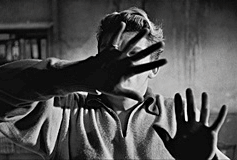
Orpheus, understand, is a fantastic film...that I am highly unqualified to judge. I man, I’m gonna give it a shot, but this isn’t gonna be a professional film essay on the reflections (ha) of this movie on the French political scene at the time or anything like that. It’s just gonna be what I thought of the movie.
And what did I think of the movie? Well, other than letting me refresh my French language skills a little, I had an excellent time with this movie. It’s stunning, it’s groundbreaking, it’s breathtaking, and it’s a great example of what can be done with clever filmmaking and practical effects. I mean, what would you expect? It’s Jean Cocteau.
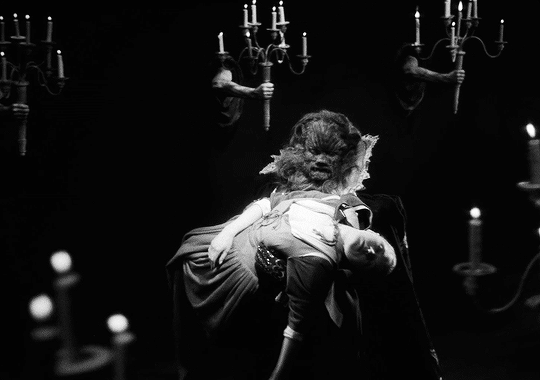
I’ve only seen one of his films prior to this, La Belle et la Bête, and that’s a beautiful film in its own right, with equally fantastic effects. Like Aladdin and The Thief of Bagdad, Disney took a lot of that film’s aesthetic and themes from Cocteau’s version of the story. What can I say, they’ve got good taste.
As for me...I’d like to think I have good taste, but that’s technically what this whole thing is for, right? To broaden my palate and further define my taste. Sooooo, what exactly did I think of this one? Check out the Recap (Part One | Part Two) if you want to see my reaction to the movie as I watched it! Otherwise...
Review

Cast and Acting: 9/10
Jean Marais is our star here, and one of Cocteau’s favorites (he was also the Beast and the Gaston in La Belle et la Bête four years earlier). He plays Orpheus like an absolute dick most of the time, which is interesting, since the character is the prototype of a tortured artist, so it makes some sense. However, that portrayal is somewhat on the writing, less so than Marais’ performance. That said, he’s still fantastic in the role. François Périer is also fucking fantastic as Heurtebise, and is genuinely my favorite character (and I still think he was meant to represent Hermes). María Casares intricately plays her complex character, an aspect of Death in love with a poet. Which, yeah, rules. And Marie Déa and Édouard Dermit were...fine as Eurydice and Jacques. Yeah, they were both very good, but I can’t say that they were perfect, especially Dermit. But still, all of these were strong performances in a strong movie.
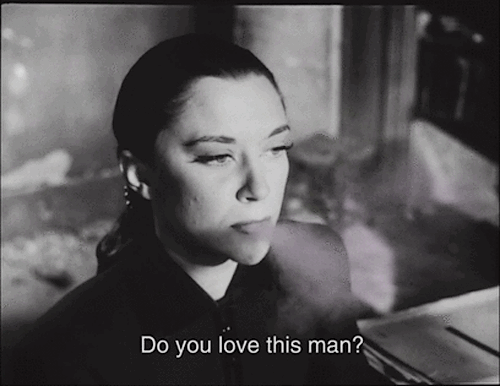
Plot and Writing: 9/10
Oh boy, the PLOT. Jean Cocteau’s screenplay is a great example of a screenplay adapted from source material, but doing something completely different with that material. It’s adaptation done...well, right, but also done creatively. Now, obviously, that’s done mostly through the visual rather than the verbal, but it’s still done VERY well. I mean, come on, they turned the tale of Orpheus into a Hades and Persephone love story as well!
Yeah, I didn’t mention it in the Recap, but think about it! An aspect of Death, referred to as royalty, falls in love with a mortal human. Said mortal is also in love with another woman (allegedly). Now, yeah, that’s basically the whole “even the Gods loved Orpheus” thing, but HE also falls in love with HER. She’s Hades, and he’s Persephone! But in the end, he needs to return to the mortal world for springtime, while Hades must remain in the Underworld...for now, anyway. Maybe that’s e over-reading a bit, but I can see it. In any case, the screenplay’s adaptation of the original story is fantastic. Not the easiest to dissect, maybe (the whole “Death loves Orpheus” thing sort of comes out of nowhere), but still great!
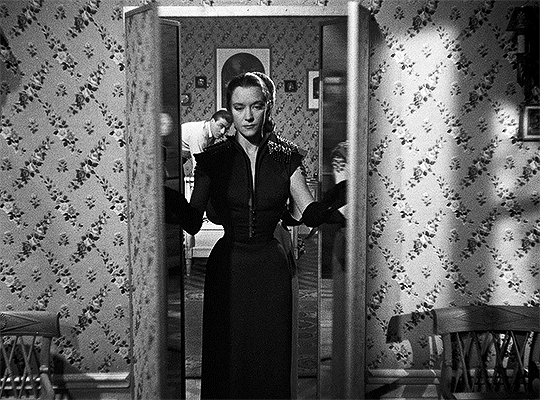
Directing and Cinematography: 10/10
I mean...it’s Jean Cocteau (and Nicolas Hayer for the cinematography). What else am I gonna do, give him a nine and say that it wasn’t perfect? I mean...come on. It was amazing. It’s Jean goddamn Cocteau. The camera movements and shot framing are goddamn spectacular IT IS JEAN FUCKING COCTEAU

Production and Art Design: 8/10
Art design was only really OK, though. Yeah, sorry, sometimes it struck me quite well, but I don’t know that I can say the production and art design was as much of a stand out for this one. The only reason is because the camera and editing really did all of the work here, real talk. Cocteau made this movie look amazing, not as much the movie itself. But don’t get me wrong, the movie does still look amazing. Whomever did the location scouting did a great job in finding an abandoned military school for the Underworld, because it’s great looking. However, again...the way it’s all shot isn’t about the set itself, it’s about the camera work. And one other thing...

Music and Editing: 10/10
MMMMMMMMMMMWAHCHEF’SKISSBABY
Yeah, now, this is an amazing goddamn editing job be Jacqueline Sadoul, and the music by Georges Auric is equally as fantastic. This is a gorgeous film, and the editing is a HUGE part of that. Practical effects is one thing, but clever editing also made this film work as well as it did. There’s so much to unpack with that, it’s genuinely hard to go into. But hell, I don’t need to. Watch this film, especially if you have HBO Max. You’ll see what I mean, because it’s a fantastic looking movie that’s genuinely hard to describe to the unfamiliar.
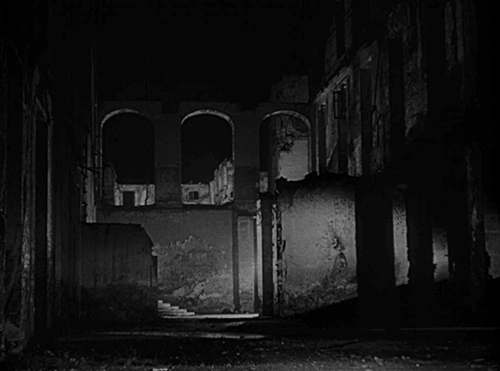
92%, and I’m not looking back.
Well, one day I probably will, because this movie was wonderful, and DEFINITELY worth another watch. Mostly so I can better figure out what’s going on, and what Cocteau’s trying to say. Although, to be fair, this movie isn’t as experimental as film can get, not by a long shot. It’s still beautiful, without a doubt, and it’s absolutely worth a second viewing.
OK. Now that that’s done, let’s go to another country renowned for its fantasy stylings. Or, to be more accurate...let’s go back. You guys ready to get spooked?
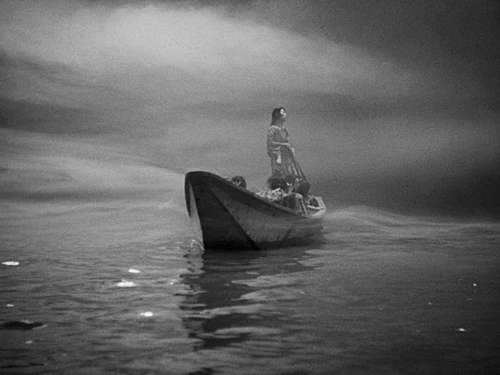
March 10, 2021: Ugetsu Monogatari (1953)
#orpheus#Orphée#orpheus 1940#orphee#cocteau#jean cocteau#orphic trilogy#jean marais#François Périer#María Casares#Marie Déa#Juliette Gréco#Édouard Dermit#fantasy march#greek mythology#user365#365 movie challenge#365 movies 365 days#365 Days 365 Movies#365 movies a year#useranais#usercande
10 notes
·
View notes
Text
🙌 Fic Rec Bingo 🙌
Created by @lightveils on Twitter, this sounded like a fun challenge to do - and I’ve managed to fill the whole card with #Malec fics! *In truth, I could’ve used a card for a number of individual writers on their own, but the fics I finally settled on are under the cut! ❤ Enjoy! And show the writers some love! :-))
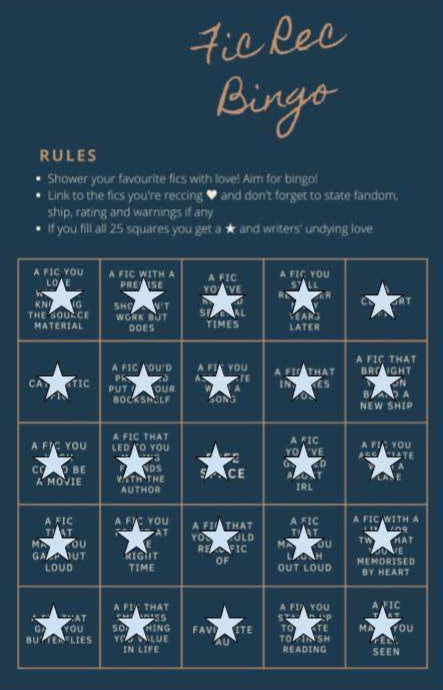
👇LINKS TO THE 25 FIC RECS BELOW THE CUT 👇
*A FIC YOU LOVE WITHOUT KNOWING THE SOURCE MATERIAL*
✨ Beyond The Sea by @lemonoclefox ✨
Never played BioShock but the underwater city of Rapture was brought to life so vividly here, that it didn’t matter!
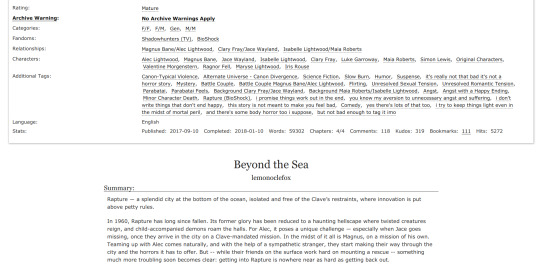
*A FIC WITH A PREMISE THAT SHOULDN’T WORK BUT DOES*
✨ How Rare and Beautiful by @glorious-spoon ✨
Having 'our' Malec appear to TWI's Magnus worked wonderfully, thanks to some very clever writing!
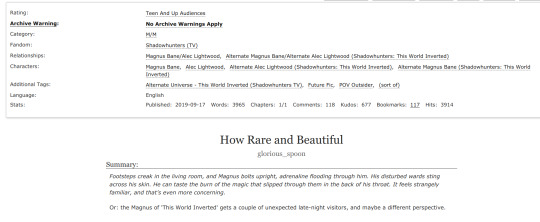
* A FIC YOU’VE RE-READ SEVERAL TIMES*
✨ Best Laid Plans by @superficialpeasant ✨
I'll always come back to this DEEPLY satisfying story of intrigue, authority, prejudice, support - and my favourite depiction of bad-ass, hot-as-hell Malec!
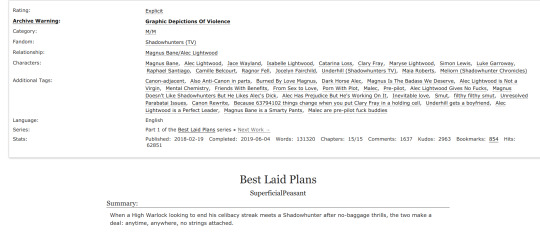
*A FIC YOU STILL REMEMBER YEARS LATER*
✨ Home by @otppurefuckingmagic ✨
I read this gem three years ago now, but I still remember the chills I got when the emotional build-up led to a twist that blind-sided me - in the best of ways!
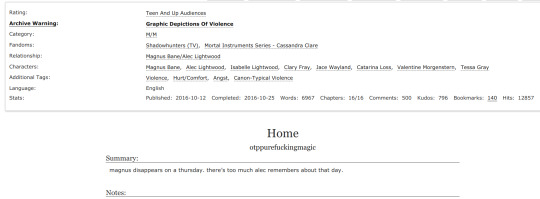
*A COMFORT FIC*
✨ Higher Than The Big Trees by @carmenlire ✨
Getting updates for this lengthy tale, knowing it was only ever going to hit new heights of happiness each time, makes this a real heart-warmer!
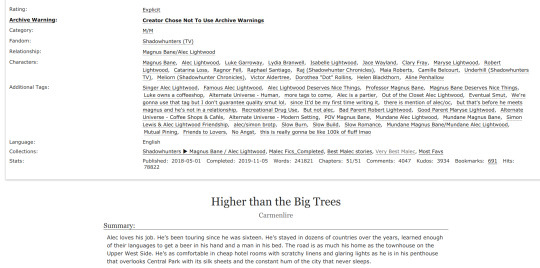
*A CATHARTIC FIC*
✨Good Intentions by @alittlebriton ✨
There was only ever one contender for this - an alternative take on what happens after Malec's 3x18 break-up - because chapter 4 had me punching the air over both of them venting their shit!
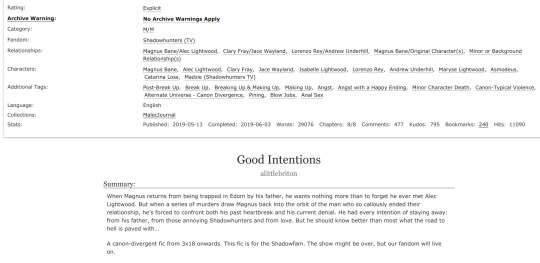
*A FIC YOU’D PRINT AND PUT ON YOUR BOOKSHELF*
✨ Of Splendour In The Grass by @lecrit ✨
Prejudice, poetry, pining and period Malec, was captured so beautifully here that it deserves to be bound and displayed in pride of place imo!
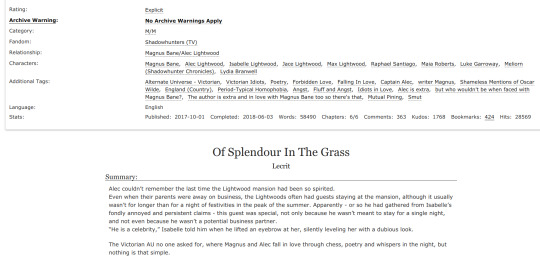
*A FIC YOU ASSOCIATE WITH A SONG*
✨ Appassionato by @chonideno ✨
Thanks to this fic, I can't hear Liszt's Liebestrume No. 3 in A flat without thinking of Alec hitting all the right notes with his music-loving neighbour!
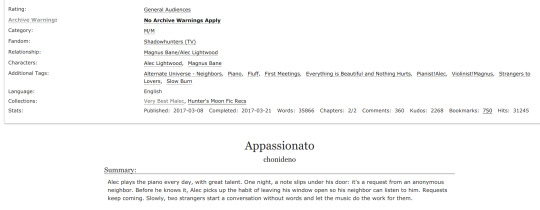
*A FIC THAT INSPIRES YOU*
✨Thousands Upon Thousands Made An Ocean by @ohlafraise✨
This emotional fic was a lesson in how to have a story pack a punch into less than 800 well-chosen words! Still hurts, even now!
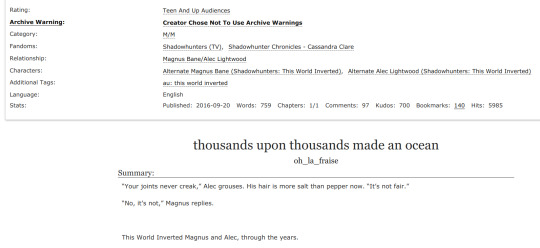
*A FIC THAT BROUGHT YOU ON BOARD A NEW SHIP*
✨Lasă-mă să stau (Let Me Stay) by @superficialpeasant ✨
An absorbing one-shot relating to the writer’s Best Laid Plans fic, this unexpectedly charming love story between Underhill and Hawkstorm (HawkHill) is the canon I will cling to!
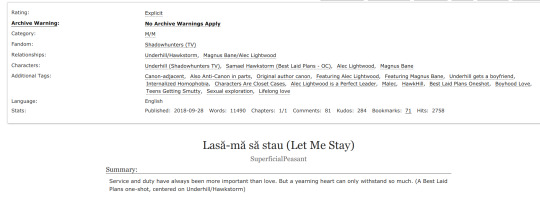
*A FIC YOU WISH COULD BE A MOVIE*
✨ A Dream Of Peace by @ketzwrites ✨
There are some fics too epic in scale and splendour for mere imagination to do them justice, and this historical tale of kingdoms and knights deserves to be watched in technicolor glory!
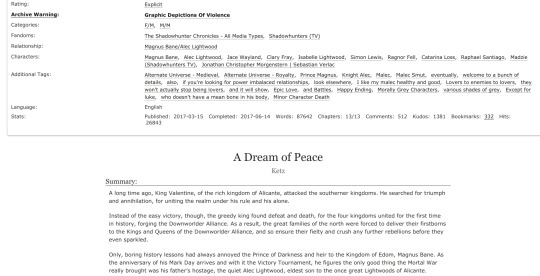
*A FIC THAT LED TO YOU MAKING FRIENDS WITH THE AUTHOR*
✨ Brooklyn Magic by @the-burning-tiger ✨
I've met so many through their work, but I'm singling out the brilliant,Tigs, here because of our ridiculous descent into poetical exchanges in the latter chapters of this fic - one of my earliest Malec reads! Sending cwtches, T! X
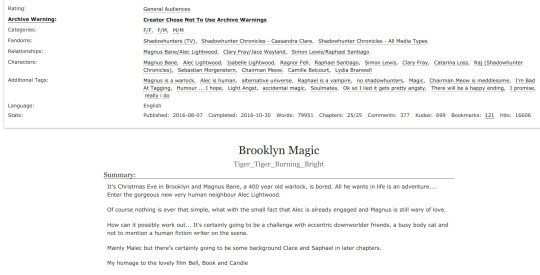
*FREE SPACE - A FIC THAT’S WORTH WAITING FOREVER FOR TO GET AN UPDATE - IT’S THAT GOOD!*
✨Working Hard/Hardly Working by @irisadler (on AO3) & @stupidnephilimlove ✨
I'm currently re-reading this sexually-charged getting-to-REALLY-know-you fic which includes relatable temptation, brilliant humour & a soft, sweet centre - believe it or not! Perfect title, btw!
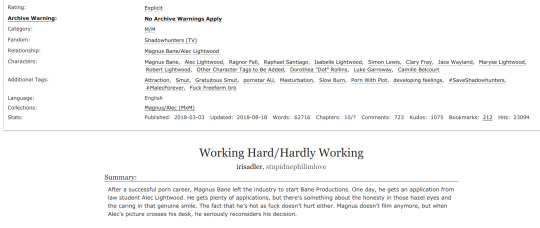
*A FIC YOU’VE GUSHED ABOUT IN REAL LIFE*
✨Your Name For A Capital by @the-prophet-lemonade✨
This time-travelling tale of repeated love and loss was both rich in detail about Magnus' past and devastatingly bittersweet about what lay ahead in Magnus' future! His heartache made me cry!
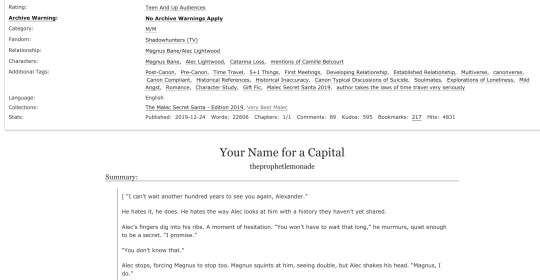
*A FIC YOU ASSOCIATE WITH A PLACE*
✨Two Halves Of The End Of The World by @la-muerta✨
Batavia was finally brought to life for me, thanks to @tethysea's enviable talent for world-building, with all the scenic detail and historical references that help enrich the story itself!
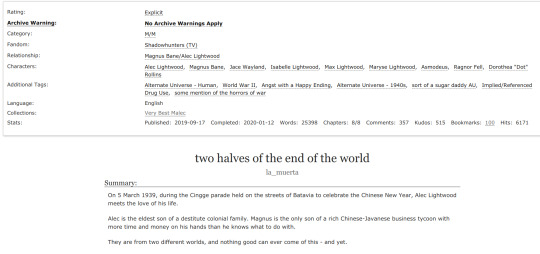
*A FIC THAT MADE YOU GASP OUT LOUD*
✨The Right Kind Of Love by @onyxmoon (on AO3)✨
I thought the 'betrayal' at the beginning of this fic was hard to take, but Magnus dealing with the aftermath and his own insecurities was even tougher! Malec learning to communicate is always a balm though!
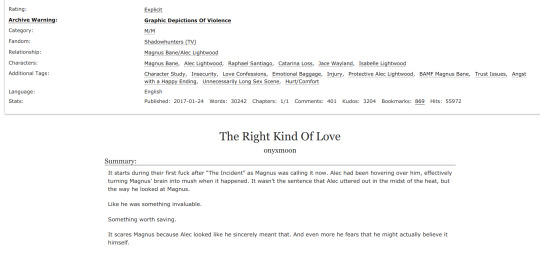
*A FIC YOU FOUND AT THE RIGHT TIME*
✨Free Of Charge by @lorenzobane✨
Magnus being appreciated and protected by his dedicated and devoted Shadowhunter in this short but seriously sweet fic was precisely what I needed after S1!
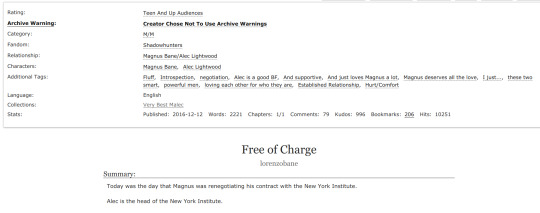
*A FIC THAT YOU WOULD READ FIC OF*
✨Lead The Way by @clockworkswans✨
Like a black hole, this Doctor/Companion AU sucked me in, and just like the Tenth Doctor, I didn't want to leave! Such a moving and fantastical journey - I'd love to hear more of their adventures!
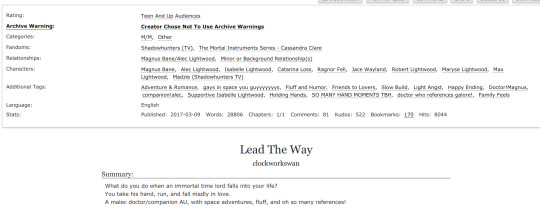
*A FIC THAT MADE YOU LAUGH OUT LOUD*
✨Don’t You Wanna Stay by @AlxSteele (on AO3)✨
Enemies to Lovers is a fave trope of mine, and when the stubborn denial and seething dislike is burned away with sexy humour and telling gestures, as in this gem, it's great fun to read!
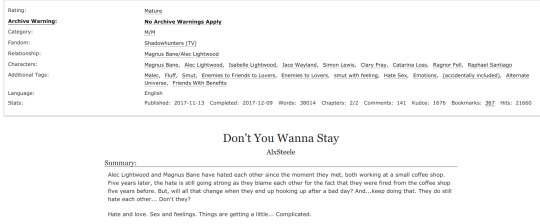
*A FIC WITH A LINE OR TWO YOU’VE MEMORISED BY HEART*
✨You Who Have Come From My Old Country by @poemsfromthealley✨
"Even so, Magnus loved him, loved him, loved him" - very few writers could persuade me to endure a Malec fic that tells of unbearable loss and suffering - but the touching celebration of their legacy is what I take away from this!
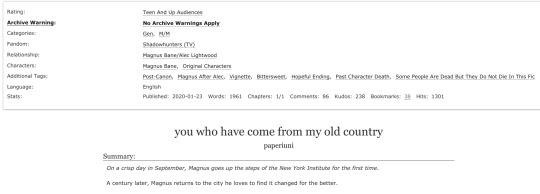
*A FIC THAT GAVE YOU BUTTERFLIES*
✨Body Of Memory by @glorious-spoon✨
This memorable fic about amnesia effectively had S1 Alec being confronted with S3 Alec's reality - and I STILL feel Magnus' fear and Alec's confusion in my bones!
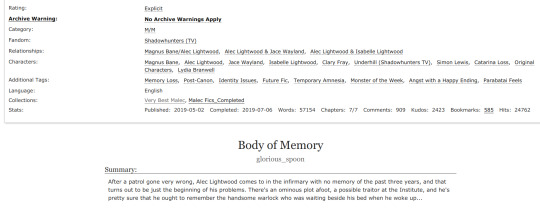
*A FIC THAT EMBODIES SOMETHING YOU VALUE IN LIFE*
✨ Magnus Bane’s School For Young Warlocks by @Miasunrise (on AO3)✨
Alec doing whatever it takes to protect his children is definitely something I can relate to, and this cleverly-crafted fic of finding new family gives depth and character to Max and Raphael!
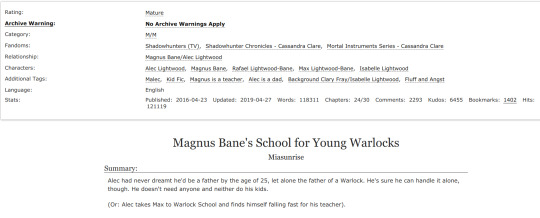
*A FAVOURITE AU*
✨Walkers Of The Winding Path by @poemsfromthealley
The bewitching combination of mythical monsters, supernatural hunters and this writer’s distinctive way with words means I'm completely under this story's spell! I'll walk this path many times, I think!
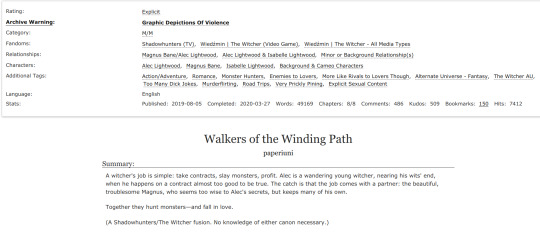
*A FIC YOU STAYED UP TOO LATE TO FINISH READING*
✨My Body Is A Cage by @unrestrainedlyexcessive✨
This was me dipping my toe into an AU I wasn't convinced I'd enjoy, but thanks to this writer’s compellingly-quirky storytelling, I couldn't rest before knowing what befell these fated lovers!
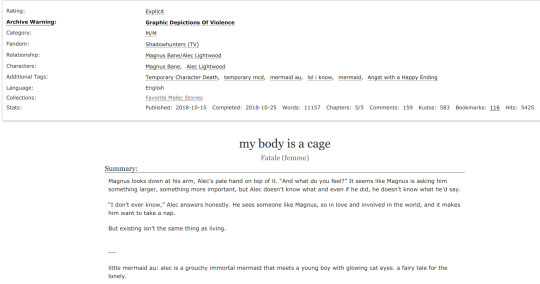
*A FIC THAT MADE YOU FEEL SEEN*
✨Beautiful Distraction by @unending-happiness✨
Who better to colour my bespoke fic with every shade of me there is, than my parabatai, Brit! Welcome to my favourite pairing - Malec & Pandemonium! LY, B! ❤😘
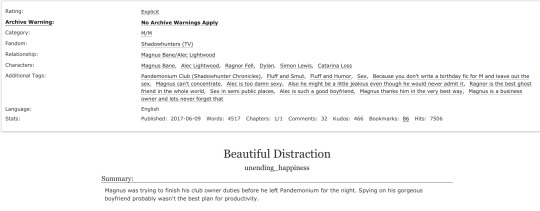
~~~~~~~~~~~~~~~~~~~~~~~~~~~~~~~~~~~~~~~~~~~~~~~~~~~~~
#MyPosts#FicRecBingo#Full card achieved!#Spoilt for choice really!#Malec#FicRec#lightveils#WriterAppreciation#It's important
140 notes
·
View notes
Text
desiree-uk replied to your photoset
“La-di-da…. Supposed to be the KPST gum ball tree… does not translate...”
I've been meaning to ask how you add extra stuff to the sculpting wheel, that's so clever :)
diplacesims replied to your photoset
“Still messing around with the sculpting data. I added the Body...”
I’m very interested in the different sculpting abilities. Can you refer me to instructions on how to add objects to the sculpting object. Thank you for your time.
________________________________________
Adding new objects to the sculpting wheel.
DISCLAIMER: I am by no means an expert. I have learned from fiddling around with the resource. Use trial and error. Add an entry, try it out in-game, and remove/modify as necessary.
You must have S3PE and S3OC installed and assumes you know how to use them.
You need to start with the sculptingdata package file. You can either extract it from the fullbuilds (please don’t ask me which one, but i would assume it in the Ambitions fullbuild...
OR
You can download the one modified by Sims MX on Mod The Sims here. Be aware that this file includes objects from World Adventures and one from the EA Store (a complete list of their additions is at the download page).
Extract the sculptingdata.package to a place where you can easily find it. I created a Temp-Extract folder on my desktop.
To add objects to the package, you need to open the sculptingdata.package in my Temp-Extract folder in S3PE.
Then right-click on the XML tag and choose Notepad from the drop down menu.

Once in Notepad, you can modify the file to add/remove objects.

Each object’s data is contained between the <Sculptures> and </sculptures> tags.
You’ll notice the first entry is all false and/or devoid of specific data. This is merely the overall format for each object:
<Sculptures> <Medator_Instance_Name></Medator_Instance_Name> <SKU>BaseGame</SKU> <Category>Other</Category> <Weight_Random_Learn>1</Weight_Random_Learn> <Min_Level>0</Min_Level> <Max_Level>10</Max_Level> <Min_Value>5</Min_Value> <Max_Value>50</Max_Value> <Overmax_Mult>0.1</Overmax_Mult> <Clay>False</Clay> <Wood>False</Wood> <Stone>False</Stone> <Ice>False</Ice> <Metal>False</Metal> <Topiary>False</Topiary> <Reserved_For_Reward>False</Reserved_For_Reward> <Random_Only>False</Random_Only> <Trait_Only>False</Trait_Only> <ProductRegistrationRequired>Undefined</ProductRegistrationRequired> </Sculptures>
Let’s start with the <Medator_Instance_Name></Medator_Instance_Name> line. This identifies the object installed in the game by, as it states, its Instance Name. If it’s an EP/SP object, open S3OC and choose Cloning > Normal Objects. Store Objects will need to be converted to package files (in not already) and opened by either utility.
Find and click on the object you wish to add to the sculptingdata and locate the Resource Name (I believe this is the same as instance name, but I opened already cloned packages in S3PE).

In S3PE, click on the OBJD tag and scroll down towards the bottom of the right panel to find the Instance Name. In either case, highlight the name and copy it.

In this case, I’ve chosen sculptureFloorRanchHorseAbstract2x1. Paste this BETWEEN the <Medator...> and </Medator...> tags as such (with no spaces):
<Medator_Instance_Name>sculptureFloorRanchHorseAbstract2x1 </Medator_Instance_Name>
The next line, <SKU>BaseGame</SKU>, identifies the EP/SP or other source for the object. Basegame is the default for all objects in the sculpting data file, and as you scroll through, you’ll notice none of the basegame objects include this line, as its the default. Objects from the Store, will show “Store” in this entry. The object I chose is from the PETS EP, so this line is needed to indicate that.
You’ll notice in the S3OC screenshot above, the object name includes EP05, identifying Pets. Drop the zero when adding it to the sculptingdata.
<SKU>EP5</SKU>
Next, <Category>Other</Category>, is a category for the object you’re adding. All of the Topiaries (all four of them) list this as “Topiary.” All of the metal sculptures list them as “Metal.” There are some specific categories, such as Statue, Barstool, different types of chairs (dining, living) and tables (end, coffee, dining), Bathroom (which includes toilets and sinks), Furniture (which is used for other types of furniture) and Other (which seems to be a catchall for anything else). Scroll through the sculptingdata file to see if there is a specific category you’re looking for.
Since I want the Pets sculpture I chose to be a metal sculpture, I used “Metal.”
<Category>Metal</Category>
The next line, <Weight_Random_Learn>1</Weight_Random_Learn>, indicates the weight, or frequency, the object will be randomly learned/sculpted. Once learned, the sculpture can be sculpted at any time from the pie menu on the sculpting wheel.
Metal sculptures and Topiaries, since there are so few of each, use single digits 1-5 to identify the weight. The other four materials (clay, wood, stone and ice) use digits from 1-100. The higher the number, the more frequent it will be randomly learned/sculpted. I initially assigned a weight of 5 to my Pets sculpture, so it would be learned quicker. I have since changed the weight to 3 after making sure it could be sculpted without issues.
<Weight_Random_Learn>3</Weight_Random_Learn>
The <Min_Level>0</Min_Level> and <Max_Level>10</Max_Level> identify the minimum and maximum levels of Sculpting Skill (0-10) a Sim must have to learn the particular sculpture. For my sculpture, I set these at 8 and 10.
<Min_Level>8</Min_Level> <Max_Level>10</Max_Level>
The <Min_Value>5</Min_Value> and <Max_Value>50</Max_Value>, I assume, are the minimum and maximum values of the sculpture. I’ve entered the values 800 and 1800 for my sculpture. The default value of 180 just seemed too low for an upper level statue.
<Min_Value>800</Min_Value> <Max_Value>1800</Max_Value>
The <Overmax_Mult>0.1</Overmax_Mult> is, I assume, a multiplier added to the value of the sculpture sculpted. My Body Sculptors have a max value of 5500, yet the completed sculptures were worth upwards of 17K (includes added values as outlined on the Sims 3 Sculpting Wiki Page). I have reduced this multiplier for that particular sculpture. For my Pets sculpture, I set it at 1.5.
<Overmax_Mult>1.5</Overmax_Mult>
The next six entries indicate the materials available for each sculpture.
<Clay>False</Clay> <Wood>False</Wood> <Stone>False</Stone> <Ice>False</Ice> <Metal>False</Metal> <Topiary>False</Topiary>
Note: Metal and Topiary will sculpt in the original material of the object. I had the PartyStatue entered as a topiary, and you can see how it turned out. NORMAL. Finding viable candidates for these two mediums is difficult.
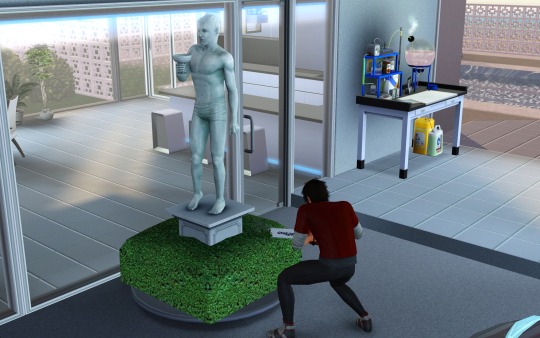
You only need to include the material types you wish your sculpture to be sculpted in, changing the False to True. For mine, I only wanted metal.
<Metal>True</Metal>
The last four entries, I will go over quickly as most will not pertain to many of the sculptures you’ll want to add.
<Reserved_For_Reward>False</Reserved_For_Reward>
This indicates that the sculpture exists only as a reward, as in the sculpting magic gnome.
<Random_Only>False</Random_Only>
This is used to indicate the the sculpture can only be sculpted randomly and can’t be learned, such as the failed goblin ice sculpture.
<Trait_Only>False</Trait_Only>
Trait Only indicates sculptures only available to Sims with the Savvy Sculptor Trait.
<ProductRegistrationRequired>Undefined</ProductRegistrationRequired>
Product Registration Required indicates registration necessary for the sculpture. This includes the two statues received in the registration incentive for Ambitions (the octopus and griffon statues, which show EP2 registration is required).
At the end of the XML resource, you’ll see a list of the Materials indicating at which level of the Sculpting Skill they become unlocked, the cost for the material and other information that pertains to the material itself.
Only the data that’s different from the default needs to be included for the sculpture you’re adding.
Save your edited data by closing Notepad. Save and close your package in S3PE. Place the updated package in your Mods folder.
--------------------------------------------------------
The final entry for my Pets sculpture is:
<Sculptures> <Medator_Instance_Name>sculptureFloorRanchHorseAbstract2x1</Medator_Instance_Name> <SKU>EP5</SKU> <Category>Metal</Category> <Weight_Random_Learn>3</Weight_Random_Learn> <Min_Level>8</Min_Level> <Max_Level>10</Max_Level> <Min_Value>80</Min_Value> <Max_Value>180</Max_Value> <Overmax_Mult>2.5</Overmax_Mult> <Metal>True</Metal> </Sculptures>

--------------------------------------------------------
If you have Pets, feel free to copy and paste the above entry. Alter to your delight.
I hope this is helpful.
23 notes
·
View notes
Text
The Four Gospels Of Sci-Fi
The “canon” of science fiction is in the news again in the wake of the recent Hugo awards, and since I’m nothing if not opinionated and I also want to load up my posting queue before diving into my next big project, this struck me as an apt topic to write on.
So settle back; we’re going to touch on the history of sci-fi, the influence of its old guard, how it pertains to religious literature, and perhaps even delve a little bit on Christianity itself at the end.
First off, a quick recap of Christian scripture for those who aren’t read up on the subject. Vacation Bible School veterans can skip this part.
. . .
The foundational works in the Christian New Testament are the four gospels: Matthew, Mark, Luke, and John.
The first three are referred to as the synoptic gospels because they tell basically the same story in the same beats, differing in style and detail, but essentially the same.
Mark is considered the oldest of the three and the primary source for Matthew and Luke (boy howdy! Am I ever streamlining a lot of Biblical scholarship here but bear with me; I’m doing this to make a point about sci-fi, not religion).
The common Christian reading of the three synoptic gospels are that Mark is the basic story, Matthew (because of its focus on Old Testament prophecies) was written with a Jewish audience in mind, Luke was written for gentiles.*
John is the gospel that sticks out.
To grossly oversimplify, the biggest difference is that the synoptic gospels mainly record what Jesus said and did, John focuses more on the who and why.
And that’s all we need to know at this moment…
. . .
The four gospels of sci-fi are Heinlein, Asimov, Clarke, and Bradbury.
(Before we go further, let us stipulate this applies only to those who came to the genre prior to Star Wars -- indeed, an argument can be made it only applies to those who were fans before Star Trek.)
Sci-fi’s synoptic gospels are the oeuvre of Robert A. Heinlein, Isaac Asimov, and Arthur C. Clarke; Ray Bradbury is the oddball.
I say they are the synoptic gospels because truth be told, you can only tell them apart by style, not content, certainly not by point of view.
If all three exchanged story ideas and plot outlines, the end results would be different only in tone and vocabulary, not theme or character.
Heinlein, Asimov, and Clarke were all technically trained and worked professionally as engineers or chemists when not writing; Bradbury was a gosh-wow! fanboy.**
If Heinlein, Asimov, Clarke, and Bradbury are the gospels of sci-fi, their John the Baptist was another John: John W. Campbell
Campbell is a problematic figure in sci-fi, so let’s just get him out of the way ASAP.
He was a good but not outstanding writer, but when you write “Who Goes There?” (basis of the various film versions of The Thing From Another World) you’ve earned your place at the table.
He was a visionary editor and under his helm Astounding / Analog set the gold standard for sci-fi for decades to come.
He was a white supremacist of the paternalistic bent, and while on the one hand that’s better than being an outright hate monger, on the other it’s more insidious since it presupposes a correct worldview without challenging that assumption.
He was a male chauvinist of the same stripe, not particularly open to female writers but willing to publish the occasional story with a female protagonist…written by a male.
He was a crank who believed a bunch of goofball ideas, from psionics (ESP, telekinisis, etc.) to dowsing to the Dean Drive to the Hieronymus Machine (a device so wonderous that even a schematic drawing of it would work!).***
Campbell by all accounts was not a bad individual and the field is still replete with those who knew and loved him, but like the cranky patriarch**** who refuses to divulge the contents of their will, forcing everyone in the family to kowtow to them, Campbell’s position atop the highest paying / most prestigious market in science fiction shaped much of the genre around him. (Full disclosure: One of the greatest highlights in my writing career was finally placing a story in Analog after fifty years of trying!)
Writers would typically aim at Astounding / Analog first, and failing to sell there, the Campbell rejects would start a long, laborious trudge down the stairs to the cheaper markets.
This held true even in the 1950s when sci-fi magazines of a more literary bent (Fantasy & Science Fiction and Galaxy in the US, New Worlds in the UK) started attracting stories written for them, not Campbell hand-me-downs.
As Jeannette Ng observed in her acceptance speech for the 2019 John W. Campbell Award for Best New Writer*****: “Through his editorial control of Astounding Science Fiction, [Campbell] is responsible for setting a tone of science fiction that still haunts the genre to this day. Sterile. Male. White. Exalting in the ambitions of imperialists and colonisers, settlers and industrialists.”
Campbell’s absolute faith in science and technology to solve all our problems (including the ones created by science and technology) while ignoring the very real problems that plague humanity since time immemorial (lust, gluttony, greed, sloth, wrath, envy, pride) coupled with his prime market position led to a genre that unquestionably accepted those settings as the only viable ones.
Campbell certainly held more direct sway over the writings of Heinlein and Asimov than he did Clarke, but Clarke’s earliest sci-fi sales were to Astounding and nothing he wrote in his first decade as a writing professional fell outside the big cushy box Campbell crafter for the genre.
And even though Heinlein and Asimov broke off for cushier writing gigs elsewhere (Heinlein in novels, Asimov mostly as a popular science promoter), they remained steadfastly loyal and respectful -- as did Clarke -- to the ends of their lives.
And on a personal, individual level, that’s a good thing -- we all need friends who will stick by us.
But Bradbury never got invited to the party.
Which is not to say he didn’t try to crack Astounding -- he did, on four occasions, two of them humorous short-shorts for the magazine’s “Probability Zero” feature, one run of the mill magic-shop-disguised-as-super-science-store tale sold in the middle of WWII when Campbell’s best writers were on active duty, and the last in 1950 when he was no longer Ray Bradbury, fanboy, but Ray Bradbury, Important American Writer!!! and Campbell published an excerpt from The Martian Chronicles.******
. . .
We’re going to take a sidebar here to discuss one of Al Ries’ immutable laws of branding.
Ries long observed there are only two models for any brand category:
A single dominant top brand with a distant second place competitor then a host of niche brands (Microsoft then Apple then everybody else)
Two big rivals fighting for first place with a competitor placing a distant third then a host of niche brands (Coke vs Pepsi with RC Cola trailing third then everybody else)
The way to break through in branding is not to waste time and effort trying to knock out a dominant brand but to create a new category to dominate!
That’s what Bradbury did in the late 1940s and early 1950s: He stopped aping the default Campbell / Astounding style and began writing more lyrical / less techno-focused sci-fi.
Heinlein, Asimov, and Clarke were no dummies and soon they too branched out more consciously to mainstream audiences.
But as successful as they were, none of them ever fully shook the influence Campbell weighed down upon them.
That is why telling people today they must read the old masters results in eyerolls.
Too often the old masters trafficked in cleverness, not as Faulkner observed “the human heart in conflict with itself.”
Heinlein managed to transcend the genre a few times, but finding the gems in his work requires a lot of effort.
Clarke remains dry and antiseptic: it speaks volumes that his best known character is HAL 9000.
And Asimov just isn’t that goof in either concept or execution. His Three Laws of Robotics demonstrates a failure of nerve and imagination: Humans won’t build robots programmed not to harm humans because the first thing humans will make robots do it kill other human beings!
So there’s our canon: Mostly irrelevant, often impenetrable.
The last author standing is the least technology oriented of the lot and Bradbury’s stories continue to work and delight because he doesn’t lecture on weights and measures but allows the reader to imagine along with him.
. . .
Okay, short Christian content now; if you came just for the sci-fi you can either stop reading or skip ahead to the footnotes.
Any field of human endeavor that does not constantly re-examine itself and challenge previous assumptions is doomed to irrelevance.
This does not mean established works need to be rejected out of hand, but we do need to ask what those works mean to us right now.
Truth is indeed timeless, but the package has a sell-by date and the contents do no one any good if they aren’t periodically taken down from the shelf and examined.
Modern Christianity -- in particular mainstream American protestantism -- has failed to closely examine the contents for quite some time.
While the field of sci-fi brims over with exciting new voices, we’re still straining to listen to the cracked / garbled / low fidelity wax cylinders of theologians long dead.
We need fewer Christians. We desperately need better Christians.
Instead of demanding those outside or struggling with the faith must read things the way we were taught to read them, understand them the way we were taught to understand them, follow along the way we were taught to follow along, perhaps we should show faith in the material and let those who will read and re-imagine the text in the light of their own experience a fair hearing.
The old canon in sci-fi fails today because it is too dated, too rooted in the mindset of a bygone era. The exception -- Bradbury (he himself a Christian and it shows in his stories) -- stays vibrant and alive and appealing because he doesn’t tell us what to think, he walks with us as we discover things for ourselves.
© Buzz Dixon
* Acts Of The Apostles is a sequel to Luke and while Jesus appears briefly in the beginning in almost a flashback fashion, that book focuses on what his disciples did afterwards.
** An interesting trait Bradbury shared with Harlan Ellison was that despite their fanboy origins, both were one helluva lot more savvy to the business of writing and publishing than anyone else in the genre, and both skillfully created public personas that served them well (Bradbury’s better than Ellison’s, granted) while they guided their careers through the treacherous shoals of gatekeepers and public fancies. Bradbury has written of his fanboy epiphany when he asked himself if he was satisfied being a fan / autograph hound or if he really wanted to be a creator, and immediately began directing his career in a fashion that could only be described as ruthless were it not attached to such a charming gentleman. Wannabees are urged to study his career and how he did it if they want to be truly remembered.
*** All well and good as fodder for sci-fi stories, not so good in reality. As the movie They Might Be Giants states: “[Don Quixote] carried it a bit too far. He thought that every windmill was a giant. That's insane. But, thinking that they might be... well… all the best minds used to think the world was flat. — But, what if it isn't? — It might be round — and bread mold might be medicine. If we never looked at things and thought of what they might be, why, we'd all still be out there in the tall grass with the apes.”
**** To stretch our Biblical analog to the breaking point, if Heinlein, Asimov, Clarke, and Bradbury are the New Testament gospels and John W. Campbell is John the Baptist, then sci-fi’s Old Testament has patriarchs such as Swift, Verne, and Wells plus the matriarch Mary Wollstonecraft Shelley, a major prophet in Hugo Gernsback, and a host of minor prophets in various pre-WWII niche media including comics.
***** An acceptance speech which in turn won a 2020 Hugo for Best Related Work -- how cool is that? ****** Basically, Bradbury was perceptive enough to recognized he turned a creative corner in 1944 with “The Lake” and broadened his submission range to include far more prestigious slick magazines such as The American Mercury and Mademoiselle and Collier’s and The New Yorker and when tipped off that Warner Bros. planned to plagiarize “The Foghorn” as the basis for The Beast From 20,000 Fathoms he didn’t waste time or money suing but sweetly judo leverage this to get his name prominently displayed on the movie posters as “Ray Bradbury…Saturday Evening Post” writer and then holy %#@& he was a Major American Writer! I loved Ray, but his gosh-wow sweet exterior camouflaged one of the most brilliant strategists I’ve ever met.
#science fiction#sci-fi#Robert A- Heinlein#Isaac Asimov#Arthur C Clarke#Ray Bradbury#John W Campbell#Christianity
17 notes
·
View notes